Bitcoin and the Energy Transition: From Risk to Opportunity
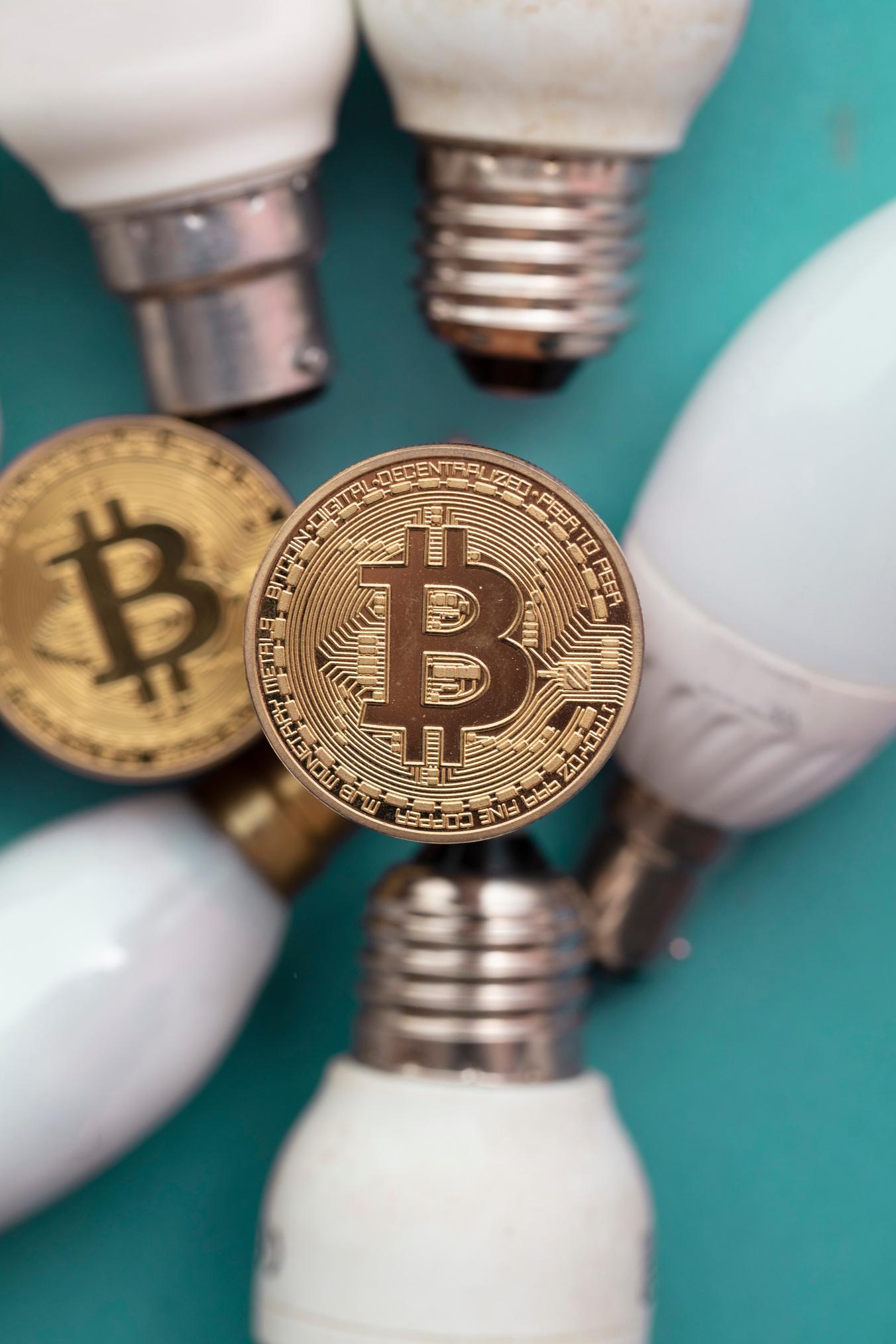
IRM Energy and Renewables Group

 By Dylan Campbell SIRM and Alexander Larsen CFIRM
By Dylan Campbell SIRM and Alexander Larsen CFIRM
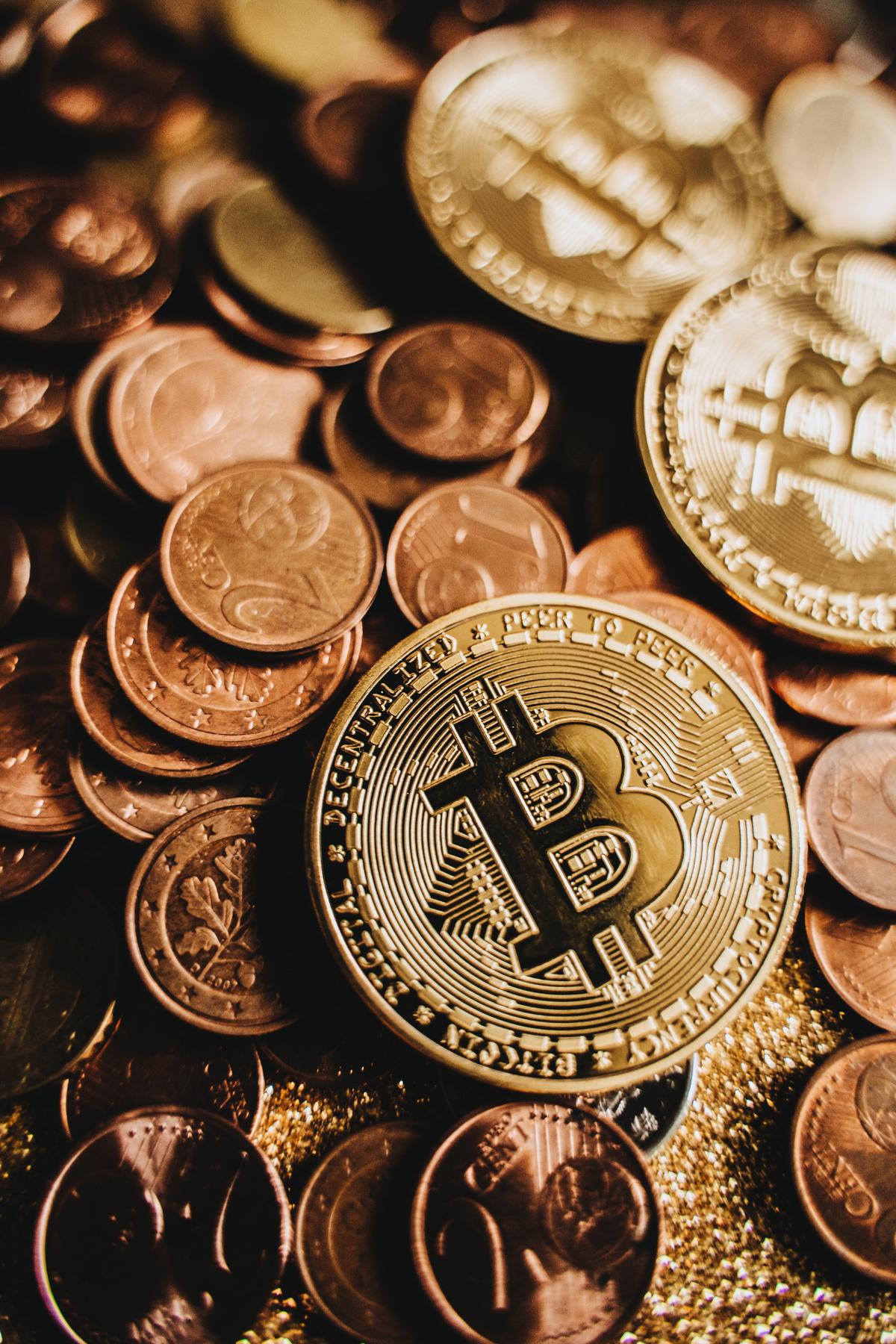
Page 1 Introduction Challenges in the Energy Industry – The Energy Transition Bitcoin: Benefits and Risks Bitcoin as an enabler of Sustainable Development? Opportunity 1: Efficient Management of Electricity Grids Opportunity 2: Mitigation of Natural Gas Flaring / Venting Opportunity 3: Accelerating adoption of Wind and Solar Energy Opportunity 4: Improving the Economics of Nuclear Power Opportunity 5: Unleashing the Power of the Oceans Opportunity 6: Untapped Heat Recovery Opportunity 7: Geothermal and Hydroelectric Energy The Future may appear to be bright, but it is not guaranteed Conclusion 1. 2. 3. 4. 5. 6. 7. 8 9 10 11 12 13 References 2 4 6 11 13 18 21 25 28 34 36 41 41 44
1. Introduction
In 1964, the Russian astrophysicist Nikolai Kardashev proposed “The Kardashev scale”, a theoretical framework to measure the technological advancement of civilisations based on their energy consumption The scale he proposed is divided into three types as follows:
Type I civilisation: A civilisation that can harness all the energy striking its planet from its host star This would include all forms of energy such as nuclear, solar, geothermal, and wind energy. For the Earth this equates to 1.7 x 10 watts.

Type II civilisation: A civilisation that can harness all the energy of its host star and will build massive structures, such as a Dyson sphere, around it to capture that energy For the sun this equates to 3 8 x 10 watts
Type III civilisation: A civilisation that can harness all the energy of its host galaxy and control the power of black holes.
While an interesting theoretical construct (noting that no civilisation has been officially classified on this scale), it does highlight a fact that has been well established For a civilisation to advance and flourish, it must find ways to harness all the energy available to it Energy and development are closely intertwined. Access to affordable, reliable, and sustainable energy is essential for economic and social development Energy is a key input for almost all economic activities, from agriculture and manufacturing to transportation and communication. Therefore, the availability of clean, reliable and affordable energy can have a significant impact on a civilisation's growth and development. Unfortunately, universal energy abundance is an ideal that the world is yet to achieve For many parts of the planet, energy is unreliable, scarce, expensive, and polluting When viewed from this perspective, the uses of energy become an important consideration
Page 2
26
17
On 15 December 2017, the World Economic Forum (WEF) published an article on its website claiming that by 2020, Bitcoin, the world’s first fully peer to peer digital currency, will consume more energy than the world is able to produce

By today's measurement, this claim proved to be a gross exaggeration, with the Bitcoin network currently consuming approximately 0.63% or 140 TWh per annum of the world’s total energy consumption It did, however, highlight a growing concern with respect to the Bitcoin network’s energy intensity, which has since persisted and continues to be the subject of discussion for policymakers around the world today.

In this publication, the IRM's Energy and Renewables Group aims to explore the risks and opportunities associated with Bitcoin as it relates to energy consumption
This is done with reference to research data, case studies and the work shared by subject matter experts We aim to address some of the claims about Bitcoin's energy consumption whilst at the same time reflecting on potential opportunities for the energy sector that arise because of Bitcoin’s growing global adoption
We hope to show that claims such as the WEF's are not only unfounded, but that bitcoins energy consumption is in fact a good thing By extrapolating the energy sector opportunities presented here, Bitcoin may be the key to unlocking global energy abundance, and perhaps, with a little imagination, be the reason our species ultimately achieves a Kardashev type 1 civilisation classification
1
Source: WEF tweet on 16 December 2017
2. Challenges in the Energy Industry – The Energy Transition
At a time when Net Zero, ESG, and sustainability are at the forefront of Board agendas, it is important to preface by noting that at the Energy and Renewables Group, we are very much in favour of energy diversity, pollution prevention, and sustainability.
Ultimately, we are pro-human flourishing Our belief is that for humanity to thrive we need energy abundance that accounts for impacts on the environment. In recent months we have seen European countries left exposed by reliance on renewables and limited sources of supply of gas This has led to major increases in prices, risking the lives of the most vulnerable who can’t afford heating It is leading to a negative impact on affected societies with people struggling to afford the basic needs of their families, let alone saving for the future.
In these recent months, the challenges to access reliable and affordable energy, as well as the associated economic fallout and increased energy prices, forced the global community to reassess the impacts of the accelerated energy transition on energy security Leading to this was a gross underinvestment in the oil and gas industry, fuelled by regulatory ESG policies, fluctuating prices, and uncertainty of future demand
In his policy brief “Climate Policy Is Macroeconomic Policy, and the Implications Will Be Significant”, economist Jean Pisani-Ferry, cofounder of Bruegel, the European think tank specialising in economics, argues that although urgent and accelerated efforts are needed to achieve net zero emissions, it is crucial to carefully consider and plan for the increasing transition costs. Pisani-Ferry emphasizes that cost-effective low-carbon technologies do offer reasons for optimism, however, transition costs are significant, and major shifts in growth patterns are likely to cause negative supply shocks, investment surges, adverse consumer welfare effects, and substantial pressure on public finances. Pisani-Ferry makes the case that policymakers must prepare for tough choices in achieving net zero emissions
We recognise that there are no silver bullets to solve the energy – environment conundrum, only trade-offs, and so we should account for risks holistically, using cost benefit analysis and scenario planning For societies to be resilient, a mix of energy sources and longer-term risk-based planning is required As an example, Norway’s successful electric vehicle (EV) transition didn’t happen overnight. It was based on a long-term sustainable plan that was put in place in the 90’s when they started introducing subsidies for EVs imported from the USA This type of forward planning, which considers risks and ensures a healthy transition with a diverse mix of energy, ensures that a society can thrive and is what all nations should strive for
Continuing on the Norway theme, many will be surprised to hear that the next phase of their electric car revolution is to reduce EV ownership Long-term city planning, public transport investment, and cultural change initiatives have been aimed at having fewer cars on the roads and in public spaces, offering more room for humans to comfortably utilise
Page 4 2 3
What has driven and made possible this incredible transformation? Oil Norway has been one of the top oil-producing countries in the world and continues to be They have used this wealth wisely
In their quest to reach net zero, they haven’t shut off the oil taps They instead created the world’s largest sovereign wealth fund which ensures that generations to come will have the security that their parents and grandparents have enjoyed The wealth fund also seeks to encourage the green transition through strict ESG requirements and voting down boards that pay lip service to ESG initiatives or partake in greenwashing This is the meaning of balance and sensible decisionmaking and one which should be adopted by governments globally To be clear, we are not advocating that all countries adopt Norway's plan wholesale, as this may not be appropriate for different geographies and jurisdictions, however, what may be learned from their example is that good governance, taking a long-term view, and accounting for risks and opportunities, will help ensure success
A long-term risk-based planning approach is essential to ensure a smooth and successful energy transition Considerations should be made regarding various challenges and how to overcome them such as the costs associated with renewable energy technologies, the availability and readiness of the infrastructure for renewable energy deployment, potential risks to energy supply chains that will ensue, and the social and economic impact of the transition, especially on developing countries where poverty reduction should be the top priority In his book “The New Map (2021)”, Daniel Yergin, vice chairman of S&P Global, considers the pace of the current energy transition in view of historic energy transitions It is evident that we are currently undertaking the fastest energy transition and on a much larger scale Daniel Yergin argues that the objective of this transition is “not just to bring on new energy sources, but to entirely change the energy foundations of what today is a $100 trillion global economy and do so in little more than a quarter century”.
To effect such massive changes to the world’s energy landscape, it is our belief that innovative and “out of the box” thinking will be a necessary requirement It is here where we believe Bitcoin can play a pivotal role to supporting this vision

Page 8 4
3. Bitcoin: Benefits and Risks
Before diving into how and why the Bitcoin network could aid in the world's energy transition, it is first important to understand why Bitcoin exists, what problem it solves, and why it is considered by some to be a revolutionary technology.
In an earlier article , we defined Bitcoin “ as a new digital form of money that is censorship resistant, seizure resistant, borderless, permissionless, pseudonymous, programmable and fully peer-to-peer.” It is the internet’s first open-source natively digital currency and is therefore available to everyone around the world, and all that is required to interact with the network is a mobile phone and an internet connection With Bitcoin, transactions are not managed by banks or financial intermediaries, but instead, value travels directly from one person to another. Payment processing is not done by a regulated company like Visa or PayPal, but instead, it is all facilitated by a decentralized global software network, with custodianship not handled by a bank but by the users of the network
It may be hard to imagine just how impactful this technology has been to date, so looking at the Bitcoin network in numbers one may begin to appreciate this At the time of writing this article the network is estimated to serve in excess of 100 million users, with a network value of approximately $600 Billion and a daily settlement volume of approximately $20 billion Included in these numbers are users from all walks of life spread across the globe. Bitcoin is now used by gig economy workers and expatriates to facilitate near-instantaneous cross-border payments, as an asset on corporate balance sheets (e.g. MicroStrategy, Tesla), as a means of legal tender by some countries (e g El Salvador), as an investment asset by some of the world’s top financial institutions, as a trading commodity for retail traders and hedge funds, as a seizure resistant currency for groups opposing authoritarian regimes , as a vehicle for preserving wealth in countries affected by hyperinflation and as a peer to peer payment system for the unbanked and poorly served in many of the worlds developing economies. These examples illustrate clear benefits derived from the network, but all of this comes at a cost
To ensure that the network runs securely, the protocol requires Bitcoin miners to compete for the right to record the next block of transactions to the Bitcoin blockchain This occurs roughly every 10 minutes with the winning miner receiving a reward of newly minted bitcoins and any associated transaction fees (paid in Bitcoin) This process, known as ‘Proof of Work’, is a computationally intensive process that imposes a financial cost on all the competing miners in the form of electricity utilisation One may therefore deduce that theoretically, by adding more energy to the network, miners may receive Bitcoin at a faster rate. To counter this, the protocol automatically adjusts the difficulty associated with successfully computing the proof of work, such that no matter the amount of energy input, successful proof generation tends to the targeted 10minute interval. This is known as the difficulty adjustment and ensures that the protocol’s bitcoin issuance rate remains stable and predictable over time at the cost of increasing energy input This network security and consensus mechanism has therefore seen increasing amounts of electricity consumption as the value of the network has grown over time
Page 6
5 6 7
Bitcoin’s actual electricity consumption is yet to be measured directly for multiple reasons, so it is estimated based on the total computational power of the network This is derived from the total network’s hash rate, or the speed at which all the machines connected to the network are processing the proof of work algorithm.

At the time of this publication Cambridge University’s Digital Assets Programme (CDAP) team estimates the annual electricity consumption of the Bitcoin network to be approximately 140 TWh per annum or 0.63% of the world’s total consumption
CDAP also estimates Bitcoin’s associated greenhouse gas emissions because of its energy consumption (i e bitcoin mining machines emit no CO2 directly) to be approximately 71 million tons of carbon dioxide equivalent (MtCO2e) or 0 14% of the world’s total emissions. Bitcoin’s energy consumption and associated carbon emissions are equivalent to that of a small developing nation
Comparisons such as these are often framed as an intolerable cost by some of the network’s detractors, who often do so without accounting for the clear benefits derived by the users of the network. On the face of it, bitcoin represents a small but not insignificant risk to those who advocate for efficient use of energy that should ideally be renewable
Upon further inspection though, we will see that by leveraging Bitcoin’s unique properties these concerns can be directly addressed
Page 7
Source: World Energy and Climate Statistics Yearbook – 2022 - https://yearbook enerdata net/
Source: Climate Watch Historical GHG Emissions 2022 Washington, DC: World Resources Institute 2019 est
World’s Top Electricity Consumers by Country Annual Electricity Consumption (TWh) China 7,714 United States 3,869 India 1,355 Russia 963 Japan 916 Brazil 579 Canada 562 South Korea 553 Germany 503 France 441 Saudi Arabia 321 Italy 300 Page 8 World’s Top Greenhouse Gas Emitters by Country Annual Greenhouse Gas Emissions (MtCO2e) China 12,055 United States 5,771 India 3,364 Indonesia 1,960 Russia 1,925 Brazil 1,452 Japan 1,134 Iran 894 Canada 774 Saudi Arabia 723 Germany 720 Democratic Republic of Congo 680
Bitcoin mining requires only computational hardware (miners), electricity, and a stable internet connection. With the availability of satellites, remote regions with surplus energy can easily be leveraged Unlike most energy-intensive industries, bitcoin miners, who can operate 1000’s of individual machines, are not bound to a particular physical location and miners can relocate relatively quickly
Mining is also modular in nature and machines can turn on and off relatively quickly to optimize power consumption Miners are therefore geographically dispersed, operationally flexible, and highly mobile.
This feature of the industry was starkly demonstrated when in 2021 the Chinese government banned cryptocurrency mining in the country Up until that point, China had been the largest contributor to the global Bitcoin hash rate i.e. the total combined computational power that is being used to process transactions to complete a proof of work by all the miners on the Bitcoin network
In the immediate aftermath the Bitcoin network’s hash rate dropped sharply, but very quickly recovered, with 14 of the biggest mining companies in the world moving more than two million machines out of China to more favourable jurisdictions Interestingly, the Chinese contribution to the hash rate has also steadily started to grow, despite the ban still being in force, calling into question the efficacy of such measures
Source: Cambridge Centre for Alternative Finance: https://ccaf io/cbeci/mining map
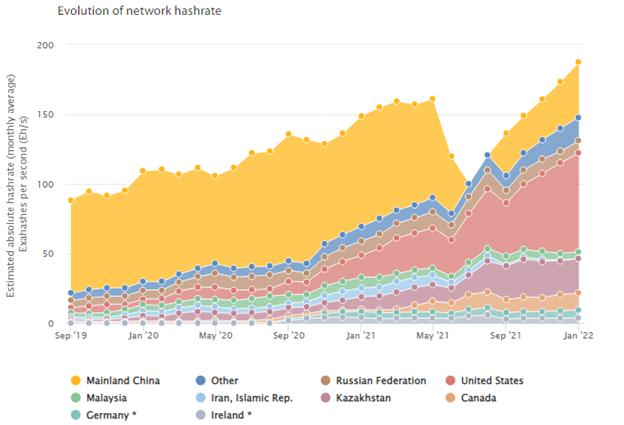
Page 9
It is not our aim to make the case for or against Bitcoin as a financial asset here, as the debate becomes nuanced when its energy consumption is considered in the context of the energy consumption of the traditional financial industry; other financial assets such as gold and less energy-intensive (but also yet unproven) alternative cryptocurrencies. What is clear is that Bitcoin is widely used and adopted, with the network’s user base continuing to grow
Energy consumption is tied to the network’s Proof of Work consensus protocol and its associated difficulty adjustment mechanism These two features are key to ensuring the security of the network, giving its growing user base confidence that the value they store within the network will remain secure It is worth noting that in its 14 years of operation, the network has never been compromised.
While the network’s energy intensity and associated greenhouse gas emissions hardly represent the imminent danger espoused by the 2017 WEF article we referenced in the introduction, in the current environment of energy scarcity and concern for limiting carbon emissions, there may be a requirement to consider the cost to benefit trade-off, particularly for policymakers and regulated entities
What may be less obvious to these entities are the unique emerging use cases in the energy sector that are being introduced by Bitcoin’s Proof of Work consensus mechanism. Consideration of these use cases should, in our view, sway the cost benefit consideration in bitcoin’s favour This is because the incentives associated with these promote energy efficiency, turning the risks associated with energy consumption and emissions into opportunities.
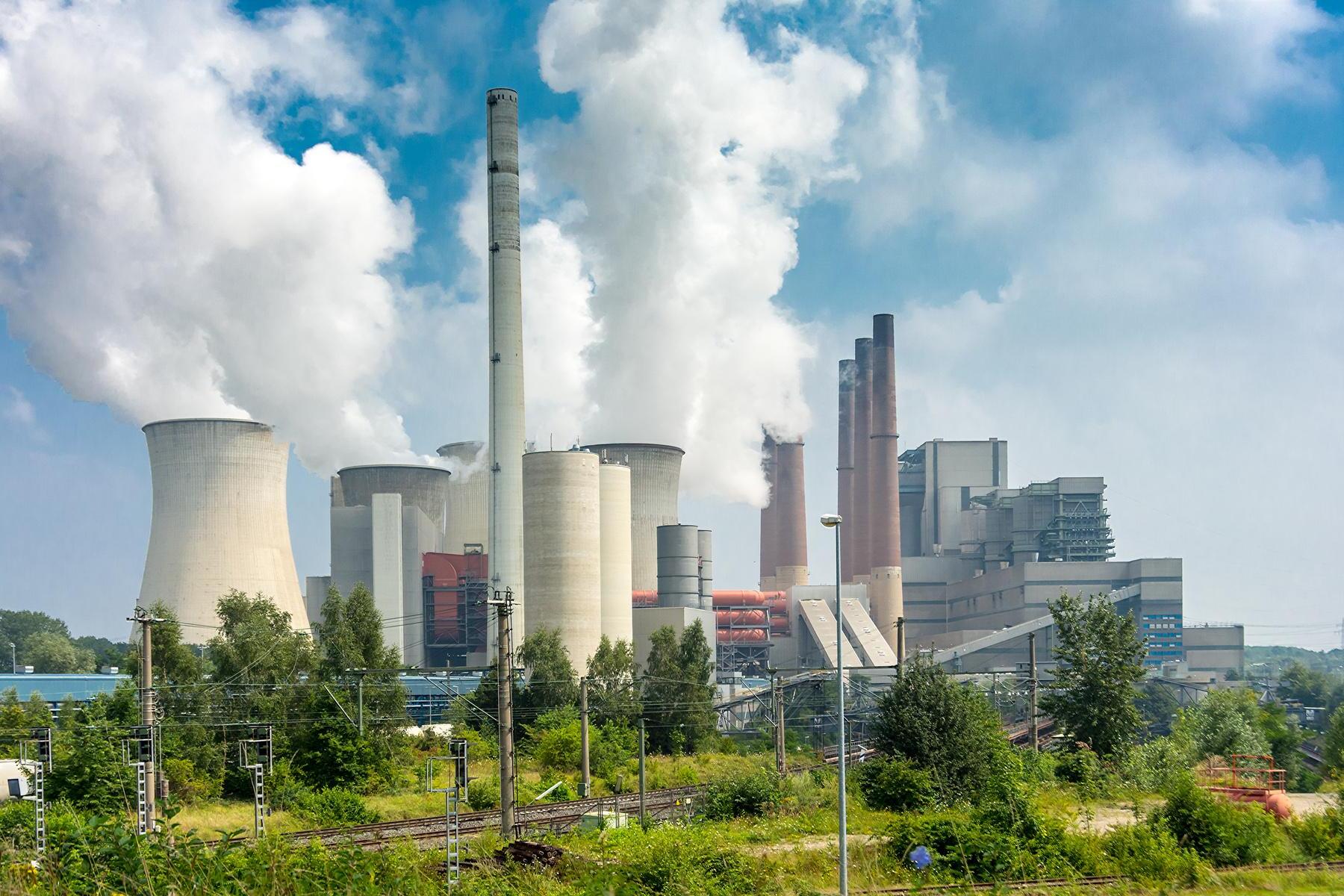
4. Bitcoin as an enabler of Sustainable
Development?
In September 2015, the United Nations, through the 2030 Agenda for Sustainable Development, published its 17 Sustainability Development Goals that “provides a shared blueprint for peace and prosperity for people and the planet, now and into the future”.
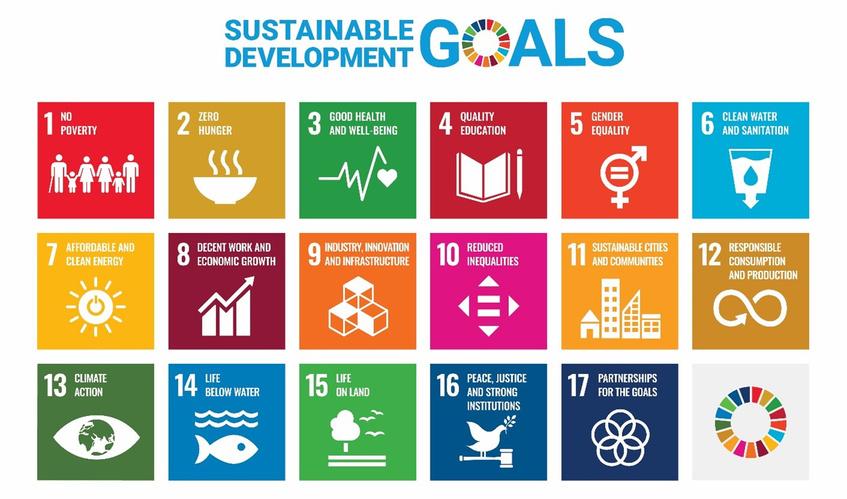
By aiming to achieve these goals, it is recognised “that ending poverty and other deprivations must go hand-in-hand with strategies that improve health and education, reduce inequality, and spur economic growth – all while tackling climate change and working to preserve our oceans and forests ”
Source: https://www un org/sustainabledevelopment/news/communications-material/
As the world races towards this sustainable future, it is evident that the energy sector will play an essential role in this journey, with energy and sustainability being interconnected Abundant, cheap energy forms the bedrock of our civilisation and is essential to poverty alleviation and human flourishing Without this, the 2030 Agenda for Sustainable Development is doomed to fail It is also a material generator of global greenhouse gas emissions and other environmental impacts Therefore, an energy transition that aims to be greener and less environmentally impactful whilst still being affordable, reliable and abundant is a vital step to achieving a sustainable future
While this transition is underway, as discussed in section 2, it is facing many hurdles. As it stands, one potential solution to help solve these challenges is the integration of bitcoin mining and sustainable energy operations. This might strike one as counterintuitive, as bitcoin mining is an energy intensive process, as described in section 3
Page 11
However, as we will describe in detail in the coming sections, Bitcoin mining can not only be a consumer of electricity generated by green energy sources but can also be an enabler of the wider adoption and viability of these sources

In this publication, we will explore the potential benefits of integrating Bitcoin mining with sustainable energy sources, and how this integration can help to support the energy sector in a sustainable and environmentally responsible manner
As described in Section 1, sustainable energy solutions that are not affordable or accessible to those in need can further exacerbate inequality and hinder progress toward a better future for all As such, we will show how Bitcoin mining operations can become a partner for a sustainable future that considers the need for accessible and affordable energy solutions.
Prioritising both environmental sustainability and social development is important, but our primary objective should be human flourishing, as espoused in the UN’s 2030 Agenda for Sustainable Development
For this to be achieved, the world requires energy abundance To achieve an energy abundant future, we should consider the costs and benefits of all opportunities that promote this
Page 12
5. Opportunity 1: Efficient Management of Electricity Grids
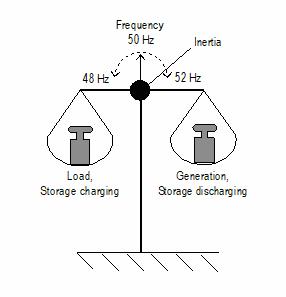
It is not always appreciated that for grids to operate in a stable manner, the amount of electricity generated and the amount of electricity consumed (i e load) must always be finely balanced. This balance is maintained around a measured target grid frequency expressed in Hertz (Hz). For most places in the world, this is 50 Hz (220-240V), although in the Americas and parts of Asia it is typically 60 Hz (100-137V)
Even a slight mismatch between generation and load, and by extension a slight deviation from the target grid frequency, can affect the system's reliability, cause damage to equipment and lead to load shedding or blackouts. Historically, centralized fossil fuel and nuclear-powered grids had sufficient flexibility to ensure the balance between generation and load
Management was not overly complex as grid operators were able to work with a limited number of large power producers to maintain the grid frequency within the desirable operating range.
With intermittent renewable wind and solar energy generators beginning to replace larger fossil fuel powered stations, it is becoming increasingly complex to achieve a stable grid frequency. There are two main reasons for this
First, there is now a larger number of smaller generators connected to the grid that are not necessarily directly operated by a central grid authority Achieving effective control of a decentralized and distributed number of smaller generators is an inherently more complex undertaking Second, most of these smaller generators provide little or no inertia, a characteristic associated with larger steam driven generators, which act as a damper to slow the rate of grid frequency changes
The UK’s National Grid Electric Systems Operator (ESO) noted that with increasing amounts of generation capacity coming from wind and solar, “system inertia is reducing and this, combined with increased variation in supply and demand, means that system frequency is more volatile and more unpredictable This requires a step change in how we manage frequency”.
The UK’s National Grid has reported that its average annual inertia capacity relative to demand has fallen by 40% between 2009 and 2020, making its network more vulnerable to frequency imbalance8
Page 13
To address this growing risk, rapid control response solutions to effectively maintain grid frequency stability are being sought by grid operators across the globe. In their research report, Arcane Research details how ERCOT, the Texas grid operator, is using bitcoin miners to provide grid frequency stability through the implementation of demand response strategies. Demand response typically involves the provision of financial incentives such as time-of-use pricing, critical peak pricing, variable peak pricing, real time pricing, and critical peak rebates to consumers to incentivise the reduction of their electricity use when generation is insufficient to meet the projected load Of noteworthy importance is the unique role played by bitcoin miners relative to other demand response resources who are able to participate in ERCOT’s demand response program
ERCOT has set different designations and associated criteria for entities to participate in their demand response program. An entity that meets the most stringent demand response requirements is categorized as a Controllable Load Resource (CLR) To earn this designation, the operator must pass several tests related to their controllability including the speed at which response adjustments can be made. CLRs must be able to adjust their load within seconds with a high degree of granularity, allowing them to take active roles in balancing the grid's frequency So far, only Bitcoin miners have earned the CLR designation, but why is that?
It all comes down to Bitcoin mining's uniqueness as an interruptible load that is a feature of its Proof of Work consensus protocol we described earlier Arcane Research describes four factors that make a load interruptible, comparing bitcoin mining's score with that of two other energyintensive consumers: A conventional data centre and a steel plant.
Cost of reacting: The cost of reacting refers to an entity’s cost of powering down its operations when energy scarcity causes the price to increase This is very high for a conventional data centre given its requirements to ensure high data availability irrespective of the cost. For bitcoin miners, the cost of reacting is associated with the cost of not mining for bitcoin In an environment where energy prices spike due to sudden constraints in grid capacity, the economic incentives to provide demand response becomes high
This is because the price of energy would exceed what the miner could have earned by spending it mining Bitcoin In other words, the miner is incentivized to stop mining since it will gain more by turning off its machines than by continuing to mine Bitcoin.
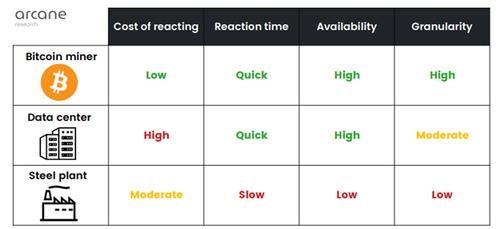
Page 14
9
Source: How Bitcoin Mining Can Transform the Energy Industry Arcane Research
Reaction time: The reaction time refers to how fast the entity can power down its operations A steel plant has a slow reaction time since it takes a serious amount of coordination to shut down a complex process in a safe manner that prevents damage to equipment On the other hand, a bitcoin mining facility is essentially a single process that can rapidly be interrupted in a similar manner to powering down a home computer This makes miners ideal participants in demand response programs that require fast reaction times.
Availability: A Bitcoin miner's load is easy to predict as it is directly proportional to the number of machines it operates and the price of energy at a given time. A system operator can therefore easily predict the extent to which a Bitcoin miners load will be available to provide demand response when needed. Industrial applications, such as that of a steel plant, typically have low load availability Steel production consists of many processes with only a few that are energyintensive enough to provide demand response. Since these processes demand different amounts of energy, a steel plant's load can fluctuate daily and weekly This does not make it a predictable supplier of demand response
Granularity: Granularity refers to the size of the increments by which the entity can adjust its load A Bitcoin miner can adjust its load in many increments given the number of machines it is able to turn on and off and is therefore highly flexible in the amount of unused capacity it can provide to the grid. This is in stark contrast to a steel plant, which either runs its electric arc furnace or not.
Scoring high on reaction cost, reaction time, availability, and granularity makes Bitcoin mining a highly interruptible load, which is why it is the only controllable load resource in ERCOT. This was proven in 2022 when ERCOT suffered the effects of a winter storm but was able to maintain grid stability through the deployment of some of its demand response resources. Riot Blockchain was among the miners that powered down its operations Research into integrating Bitcoin miners into grid management programs has shown that it could be a win-win strategy for both miners and grid operators Miners could create a substantial revenue stream by providing flexibility, which in turn reduces electricity prices across the system This would however require careful management and the planning required goes beyond grid operators and the energy sector. This ultimately sits with policymakers who face the dual challenge of keeping up with the fast pace of the mining migration while ensuring that the infrastructure is ready and the grid security is not compromised Failure to do so could have the opposite effect
Wouldn't batteries do the same thing?
One of the solutions being applied by countries to address the grid instability caused by intermittent renewable energy power supply is the use of batteries for energy storage. Batteries can store excess energy generated during times of low demand, which can then be discharged during times of high demand, helping to balance supply and demand on the grid. There are several types of batteries used for energy storage, however, the most commonly used are lithiumion batteries These batteries have high energy density, long cycle life, low self-discharge rates, and are widely used in residential, commercial, and utility-scale applications.
Page 15
10
Nevertheless, there are challenges to the use of these batteries, such as:
Limited storage capacity so as to be ineffective beyond a few hours; Performance degradation over time which can lead to a decrease in the system efficiency; Safety risks particularly in large-scale applications which cause concerns about fires and explosions;
High costs of battery energy storage (although costs have been declining rapidly in recent years), which acts as a significant barrier to widespread adoption; and Environmental impact relating to the production and disposal of such batteries.
Additionally, Lithium-ion batteries typically use lithium, cobalt, nickel, graphite, and other rare earth metals There are challenges associated with the scarcity of lithium, especially as demand for lithium-ion batteries continues to increase with the growth of the electric vehicle and energy storage markets Also, there are environmental and social impacts resulting from the ways the materials used in these batteries are mined For example, the mining of cobalt in the Democratic Republic of Congo (DRC) has been linked to child labour and poor working conditions including mining collapses and human rights abuses
Lithium and nickel mining has led to habitat destruction and water pollution among other environmental impacts. Nickel mining also causes plumes of sulfur dioxide as well as cancerous dust In addition, the disposal of such batteries can lead to toxic waste and emissions There are other types of batteries such as Lead-Acid Batteries and Nickel-Cadmium Batteries, however the social and environmental impacts related to these are not any better.
An approach combining Bitcoin mining with battery storage can be used to better balance an electricity grid Using Bitcoin mining in conjunction with battery storage can provide additional advantages and help to overcome some of the challenges associated with battery storage. Integrating bitcoin mining along with energy battery storage, provides an additional revenue stream for renewable energy projects by using excess energy to power bitcoin mining operations, in addition to the revenue generated from selling energy to the grid.
Additionally, one of the main challenges with battery energy storage, as stated earlier is high cost, especially when used at large scale The additional revenue stream provided by Bitcoin mining can help to offset some of these costs. This supplementary revenue stream can help to make renewable energy projects more financially viable This may however require grids to become smarter
What are Smart grids?
Bitcoin mining bridges real world thermodynamics with the world’s first concept of digital scarcity. This makes it ideally suited to participate in ‘smart grid’ programs A smart grid is an advanced and digitally enabled power grid that leverages communication and information technologies to better manage the generation, distribution, and consumption of electricity.
Page 16
11
Unlike traditional power grids, which operate in a one-way flow of electricity from power plants to consumers, smart grids enable a two-way flow of information and electricity, allowing for more efficient and reliable energy management Smart grids incorporate a range of technologies, including sensors, advanced metering infrastructure, data analytics, and automation, to optimize power flow, detect and respond to power outages, and improve energy efficiency By leveraging these technologies, smart grids enable utilities and consumers to better monitor and manage their energy use, reduce costs, and minimize the environmental impact of energy production and consumption
One potential area for Bitcoin to leverage would be in payments for energy consumption As an example, the energy market in the USA currently suffers from financial inefficiencies, where payments for electricity consumption flow slower than the electricity itself This results in prepayments by producers, traders, and grid operators, and bundled payment from consumers, making it challenging to pass on short-term price fluctuations to consumers It is estimated that the US energy market incurs about 10% of the energy price in additional costs due to intermediaries in payment processing, increased administrative overhead, and risk management. To reduce these costs, energy, and money must flow at the same speed, and payments should be automatically routed to all participants in the value chain instantly.
It is here where machine-to-machine payments over Bitcoin’s Lightning Network come into play. As most households already have a smart meter, layering in this technology would facilitate automated payments per unit of electricity, resulting in payment efficiencies that will lead to cost savings.
As grids around the world aim to become smarter, access to a demand response resource with the properties of a bitcoin miner, possibly in combination with batteries, could become key to ensuring these types of grids meet their stated smart grid objectives.

6. Opportunity 2: Mitigation of Natural Gas Flaring / Venting
Much of the information described in this section is based on the work done by Daniel Batten , who has done extensive research into the potential opportunities associated with using bitcoin mining to curb methane gas emissions.
With reference to the IPCC’s target to limit global warming to under 1 5°C, the United Nations Environment Programme (UNEP) recently stated that “the 1.5°C target cannot be achieved without reducing methane emissions by 40-45% by 2030 Reduction of this magnitude would avoid nearly 0.3°C of warming by 2045 and complement long-term climate change mitigation efforts”
It is clear the mitigation of methane emissions will be key to achieving lower CO -eq concentrations in the atmosphere This is because of the properties associated with this trace gas:
Methane has an 84 times higher warming effect over a 20-year period compared to CO
Methane’s relative contribution sits between 17-30% (average 23.1%) of CO -eq emissions
Methane stays in the atmosphere for 9-12 years, meaning that the impact of reducing methane will be felt almost immediately, unlike CO , which takes around 100 years to dissipate.
Methane, the primary component in natural gas, is found both below ground and under the seafloor and is formed by both geological and biological processes The UNEP has estimated that more than half of global methane emissions stem from human activities in three sectors:
fossil fuels (35 percent of human-caused emissions), with oil and gas extraction, processing, and distribution accounting for 23 percent, and coal mining accounting for 12 per cent of emissions
waste (20 percent from landfills and wastewater), and agriculture (40 percent), with livestock emissions from manure and enteric fermentation representing roughly 32 percent, and rice cultivation 8 percent of global anthropogenic emissions
The methane released when extracting oil is often typically too far from a pipeline or power grid to be used efficiently (so-called ‘stranded gas’) As a result, it is often wasted by burning, or flaring, the gas. However, this process is not completely efficient, with estimates showing that only 92% of the gas is being turned into carbon dioxide and the remaining 8% being released into the atmosphere. This results in methane being a significant contributor to greenhouse gas emissions. Landfills also contribute to this problem, with a recent study showing that 70% of landfills in the U S release methane directly into the atmosphere
Page 18
12 13 2 2 2 2
Bitcoin mining can reduce our global emissions by up to 8% by 2030 simply by converting the world’s wasted methane emissions into 80x less harmful emissions In his article "How Carbon Negative are Different Ways of Combusting Atmosphere-bound Methane" , Daniel Batten presents a theoretical case that suggests using captured methane to power bitcoin mining operations as a way to reduce the amount of methane that is flared or vented into the atmosphere. He shows that this approach could even be carbon negative, meaning that it would result in a net reduction in greenhouse gas emissions!
This is because, while burning methane is emission positive, when you burn methane that would otherwise have been vented into the atmosphere, it actually acts as a form of “carbon and methane capture”. This is because methane is so much more harmful than carbon dioxide, as described above
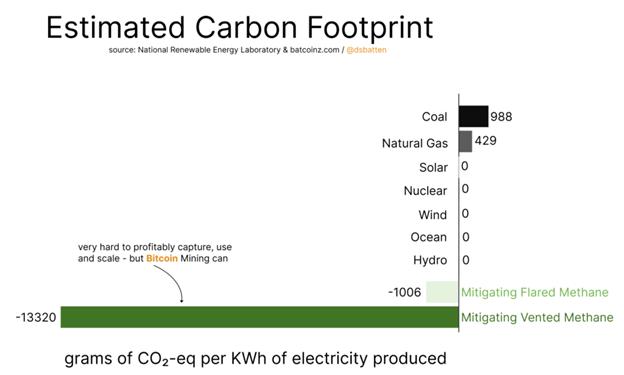
Source: https://batcoinz com/how-carbon-negative-are-different-ways-of-combusting-atmosphere-bound-methane/
A Bitcoin mining operations energy requirement could be sourced from captured methane, which would otherwise be wasted by venting or flaring. The methane is captured, treated and sent to a generator which converts the chemical energy into electrical energy This energy is used by an onsite bitcoin mining mobile unit As described above, bitcoin mining units are modular in nature and portable, and can be up and running within weeks of a landfill or oil field operator signing a contract
The advantage to the bitcoin mining company is that it secures cheap electricity The landfill or oil field owner benefits by converting an environmental, regulatory and economic liability into an asset, generating income for every kWh of electricity produced Most importantly, because that gas is cleanly combusted, the emissions from each landfill or oilfield are reduced While Daniel Batten’s projections are theoretical, when scaled globally these emissions savings become material, with practical examples already being demonstrated
Page 19
14
Denver-based Crusoe Energy already operates a number of Bitcoin data centres throughout North America doing exactly this They are supporting oil major, ExxonMobil and are reportedly also partnering with oil and gas companies in the Middle East to do the same Interestingly, in an about turn on their 2017 Tweet, we mentioned in the introduction to this publication, even the WEF has acknowledged these benefits by posting a video on their website featuring Crusoe Energy’s Bitcoin data centres, noting that they are “aligning the future of computing with the future of the climate ” ConocoPhillips, another oil and gas company has also reported to be running similar initiatives
These companies recognise that it can be economically challenging to dispose of, or use waste gas and have wrestled with this problem for decades. Bitcoin mining’s unique features have provided these companies with a solution that is friendlier to the environment and more economical It is for these reasons that we believe this use case will only continue to grow.

7. Opportunity 3: Accelerating adoption of Wind and Solar Energy
As pointed out before, a lot of criticism toward Bitcoin mining stems from the industry’s consumption of energy and the associated carbon footprint, its impact on the future of climate change and the sustainability of the environment.
The Bitcoin mining community has recently been actively promoting and implementing the use of sustainable sources of electricity. Critics may argue, however, that this is motivated by the mining community wanting to combat and address the criticism against Bitcoin mining’s growing energy consumption. Another more plausible motive for Bitcoin miners however is the constant search for cheap sources of electricity Bitcoin mining is affected by a process called the Bitcoin halving event Bitcoin halving refers to the protocols programmed reduction in the issuance rate at which new Bitcoins are mined. Approximately every 4 years, the number of Bitcoins awarded to miners is cut in half This halving continues until all 21 million Bitcoins have been mined, after which no new Bitcoins will be created. As a result, the rate at which new Bitcoins are mined slows down, making each coin more valuable and harder to obtain This gives incentive to miners to look for more efficient and cost-effective ways to mine Bitcoin by seeking cheaper sources of electricity.
Regardless of the motive, there is no denying that Bitcoin mining is going green, arguably at a faster rate than most other industries. The Bitcoin Mining Council reported an estimate of the global bitcoin mining industry’s sustainable electricity mix at 59 4% (Q3 of 2022) making it one of the most sustainable industries worldwide. Despite solar and wind sources constituting a relatively small portion of the electricity mix of Bitcoin mining, this contribution has been steadily increasing in recent years; the proportion of solar energy has more than doubled from 2019 to 2022, while that of wind energy registered an estimated increase of more than 20% during the same period That being noted, there may be other avenues through which Bitcoin mining can help further accelerate the adoption of solar and wind energy.
Improving the economics of renewable energy
A significant issue jeopardizing solar and wind power adoption is energy waste as a result of the variable nature of energy production from these sources In the pursuit of limiting global warming to under 2॰C above pre-industrial levels, solar and wind power generation are expected to reach 2,800 GW and 4,200 GW by 2040 respectively This goal is hindered by the energy waste that results from its intermittency, and thus it negatively affects the economics of these projects.
The majority of utility-scale solar power projects are located in rural areas where they have higher generation capacity than the local demand Similarly, wind farms are set away from heavily populated areas making their power generation capacity greater than the local demand This leads to most of the produced energy not being consumed locally and requires investment in transmission systems to transport the excess energy to where demand is more significant The capacity of the transmission lines is not always high enough to transport all the energy at peak solar and wind generation
Page 21
15 17 16
9
An example of that is the West Texas Export Constraint, where the transmission lines have a capacity lower than the excess solar and wind energy produced in West Texas, limiting the ability to transmit surplus energy to the rest of the state, as detailed by Arcane in their 2022 research report. Low local demand combined with limited transmission line capacity leads to a great surplus of renewable energy being wasted and thus lost income for solar and wind projects This is known as economic curtailment.
There are two types of curtailment; systemwide and local Systemwide curtailment is where a renewable energy plant is able to produce a certain amount of energy but is unable to send it to the grid as a result of insufficient demand Local curtailment on the other hand is caused by lowcapacity transmission lines which are incapable of transporting the electricity from the renewable energy plant to where there is demand Wasted energy is the result of both types of curtailment with the power producer receiving no compensation for this.
Solar and wind energy are relatively affordable sources of green energy They have the lowest Levelized Cost of Electricity (LCOE), compared to other renewable energy sources in the United States, at $36 and $40 respectively The cost of producing energy from solar and wind consists mostly of initial investments (capital expenditures) and there are few ongoing operating expenses (OPEX)
This means that their marginal production cost, or the cost to produce one more unit of energy, is very low, close to $0 allowing power plants to sell the produced electricity at very low prices Therefore, in order to be profitable, a solar or wind power plant needs to maximize the amount of electricity it sells during its operational lifespan compensating for the CAPEX and providing enough income to be economically viable.
However, since power production of solar and wind power plants depends mainly on the time of day and weather conditions, the produced energy fluctuates between two extremes This makes energy prices generated from solar or wind unpredictable and subject to rapid change; when there is a lot of wind or sun, the energy prices can become extremely low or even negative due to a very high supply On the other hand, when there is not enough wind or sun, energy prices can become very high due to a limited power supply.
The high volatility in energy prices caused by the variability of their energy production can readily be observed in electricity markets with a high share of production that comes from these sources In addition, to encourage the use of green energy sources, many governments offer subsidies
However, these subsidies can also result in a high number of instances of negative electricity prices in regions where solar and wind energy play a significant role in energy production. Curtailing along with negative prices can significantly reduce the revenue generated from these renewable energy sources negatively impacting solar and wind power project economics.
Page 22
9
The map above shows the frequency of negative prices in the United States from 2015 to 2021
We can note that the frequency of negative prices in the central part of the US (a windy region with rising wind power development) has increased significantly between 2015 and 2021. Bitcoin mining may be an unlikely solution to the energy curtailment and negative energy prices that impact solar and wind energy generation projects. By strategically locating Bitcoin mining centres close to solar and wind power plants, Bitcoin miners can off-take otherwise wasted energy at cheap prices by making use of Bitcoin mining’s interruptibility characteristic explained in section 5. This is beneficial to the plant operators, as they are selling otherwise wasted energy, increasing revenues and avoiding or minimizing the frequency of negative prices This is also especially attractive to Bitcoin miners who now have access to cheap clean energy to power their mining activities This is however contingent on incentivizing miners to accept less than 100% uptime It does however appear that the necessary incentives are there, as in 2022 Bitcoin mining in Texas has accounted for a significant portion of industrial demand growth on the ERCOT grid Last year, the grid operator formed a task force dedicated to industrial-scale miners after having received over 27 GW of interconnection requests from miners a volume that, if realised, would dwarf the grid's current 2 GW of miner-driven demand

Accelerating the adoption of Solar and Wind power plants
Grid congestion and negative impacts on solar and wind power prices have led to the delay of these projects, curtailing the growth of these renewable energy sources For example, more than 200GW of renewable power capacity was recently in queue in three U S grid interconnections These projects have developers and financing; however, the grids cannot accommodate the additional capacity Solving this issue requires enhanced transmission line capacity and improved energy storage, which are currently too expensive for wide-scale usage. In cases such as these, Bitcoin mining may again be the solution Bitcoin mining produces a digital block of information that travels through the internet with no requisite for supply chains This affords Bitcoin mining facilities the flexibility to be located in virtually any location, provided that there’s a stable internet connection and power supply
Page 23
18
Source: Arcane report
This location agnosticism, in addition to interruptibility and granularity, as detailed earlier in section 5, renders Bitcoin mining the perfect purchaser of stranded renewable energy from onhold solar and wind power projects, while transmission infrastructure is being built out Miners can design and build mining facilities near renewable power plants that fit the exact supply capacity of the plants This can provide such projects viability until a more permanent solution is reached and the plant can be connected to the grid. At this point, mining facilities can become demand response resources and off-take any curtailed energy Another approach is to build mining facilities in specially designed shipping containers Once the solar or wind power plant is able to connect to the grid, all or some of these containers can be relocated easily. This portability characteristic makes it easy to relocate mining facilities to consume other stranded energy, further enabling the growth and adoption of solar and wind energy. A real-world example demonstrating the portability of Bitcoin mining would be the seasonal Chinese mining migration, in which Chinese miners, prior to the Bitcoin ban, moved their machines to follow hydroelectric power availability caused by wet and dry seasons
The integration of Bitcoin mining operations and solar and wind power plants is well underway; the first bitcoin mine that is 100% powered by solar energy, the Tregalana Solar Project in Whyalla, South Australia is up and running. This 5 MW data center was developed by Lumos Digital Mining and uses renewable energy sourced from the solar project, while surplus energy from different sources could be used to ramp up production when demand is low. Lumos Digital Mining CEO Dong Wang said the facility provided a guaranteed baseload, ensuring the Tregalana Solar Project it is connected to is financially viable The operation has the potential to mine at least 100 bitcoins a year, and construction of a 10 MW solar farm is expected to commence in a few months
This promising example is one of many similar projects that have come to fruition around the world. However, as discussed above, there are clear limitations associated with wind and solar. These may however be addressed by a combination of Bitcoin mining and batteries, as noted earlier
In her PhD dissertation, Laura Öysti , argues that “without Bitcoin mining, renewables can provide only 40% of the grids demand”, but in combination with bitcoin mining and batteries, solar projects could provide up to 99% of a grid’s needs
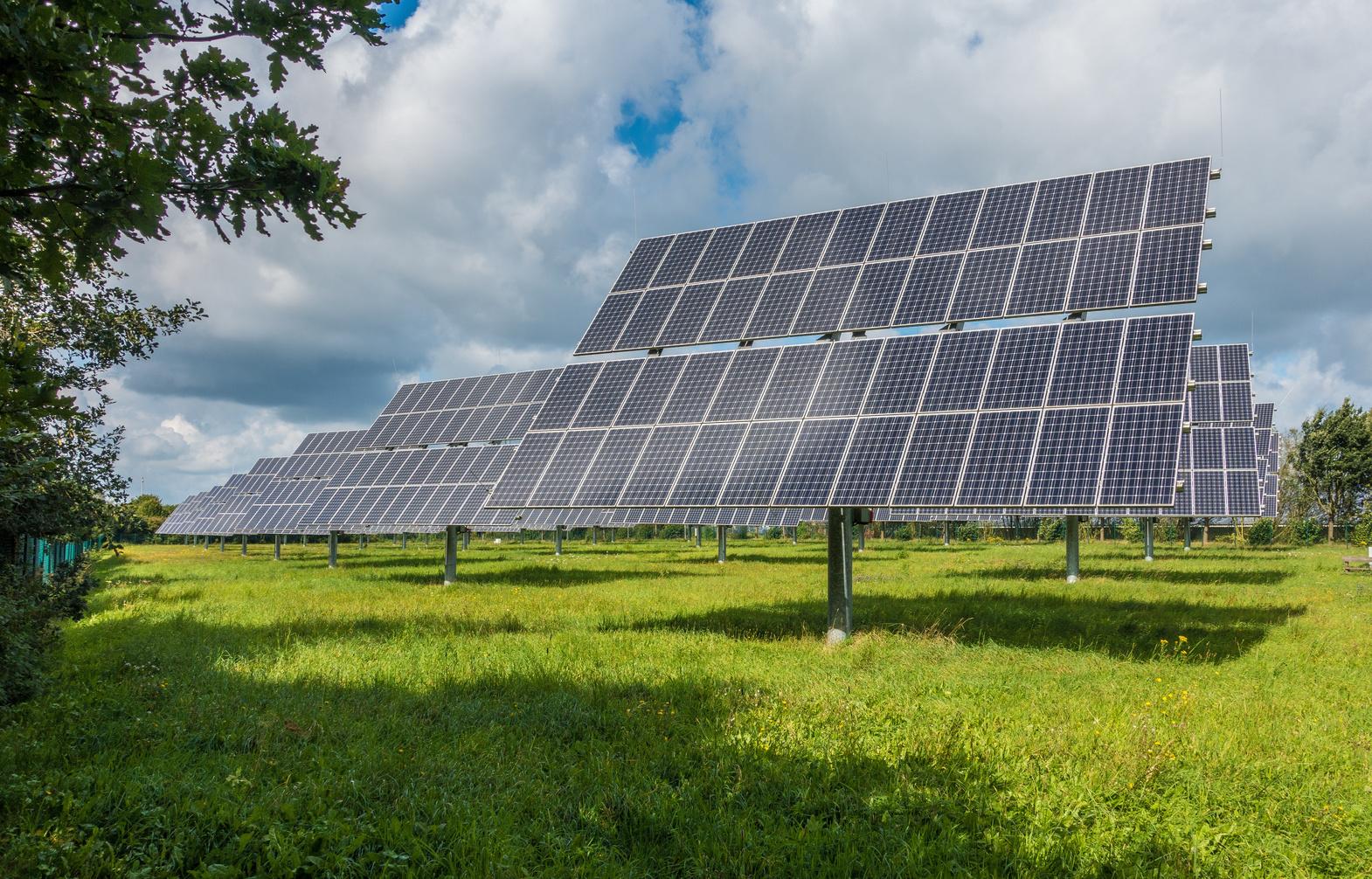
9 19 20
8. Opportunity 4: Improving the Economics of Nuclear Power
Another energy industry that can benefit from Bitcoin mining is the nuclear energy industry. Nuclear energy, similar to solar and wind energy, is a zero-emission clean energy source; it generates electricity without emitting greenhouse gases. Additionally, nuclear energy has a relatively low life-cycle carbon footprint compared to fossil fuels.
Nuclear energy generates electricity through a process called nuclear fission. In a nuclear power plant, this process takes place inside a reactor Nuclear fuel, commonly used in the form of enriched uranium, is placed inside the reactor where uranium atoms are bombarded with neutrons, which causes them to split apart and release large amounts of energy in the form of heat and electromagnetic radiation This energy is then used to produce steam, which drives a turbine connected to a generator. The generator converts the mechanical energy of the turning turbine into electrical energy
Although not a renewable source, nuclear energy carries important advantages Nuclear power plants can generate electricity in large amounts and at a constant rate, regardless of weather conditions or time of day, making them well-suited for meeting the base-load energy demand of a large power grid They also have a high energy density, that is they can generate large amounts of electricity from a relatively small amount of fuel, making them a more efficient source of electricity when compared to wind or solar In addition, nuclear power plants have a long lifespan, typically 60 years or more, which makes them a relatively long-term investment. These plants are also highly reliable and are able to generate electricity for long periods of time without interruption. Despite nuclear energy being a clean and reliable source of energy that can help reduce greenhouse gas emissions and meet the growing demand for electricity, it has not been adopted as widely as other forms of power generation
One reason for the hindered growth of nuclear power plants is their high costs compared to renewable sources of energy. In addition, at low demand, nuclear plants have to either curtail excess energy produced or sell it at negative prices which negatively affects the revenue streams of those plants.
Nuclear facilities can however mitigate these challenges by selling excess electricity to Bitcoin miners to increase their revenues and improve their economics as they compete with lower-priced generators Bitcoin mining can help improve the financial viability of nuclear power plant projects and improve their growth by strengthening the economic case for these energy-dense and reliable power generators Bitcoin miners such as TeraWulf have already started exploring nuclearpowered operations; Nautilus, TeraWulf’s Bitcoin mining facility is one of the first nuclear-powered Bitcoin mines in the U S TeraWulf is partnering with Talen Energy, a US power company to develop this
There are other concerns that deter the wide adoption of nuclear power plants, most importantly public perception on the safety associated with nuclear power plants.
Page 25
21
The nuclear industry is arguably one of the most regulated industries in the world and has an outstanding safety record when compared to other industries Unfortunately, the recent Fukushima incident in 2011 has exacerbated public fear, even though to date, no fatality has been directly attributed to the incident. Another concern related to the adoption of nuclear power plants is the “peak uranium” concept, a term used to refer to the point in time when the production of uranium reaches its maximum before declining and eventually running out. As with “peak oil”, it is not anticipated that the world will run out of uranium any time soon
Small Modular Reactors
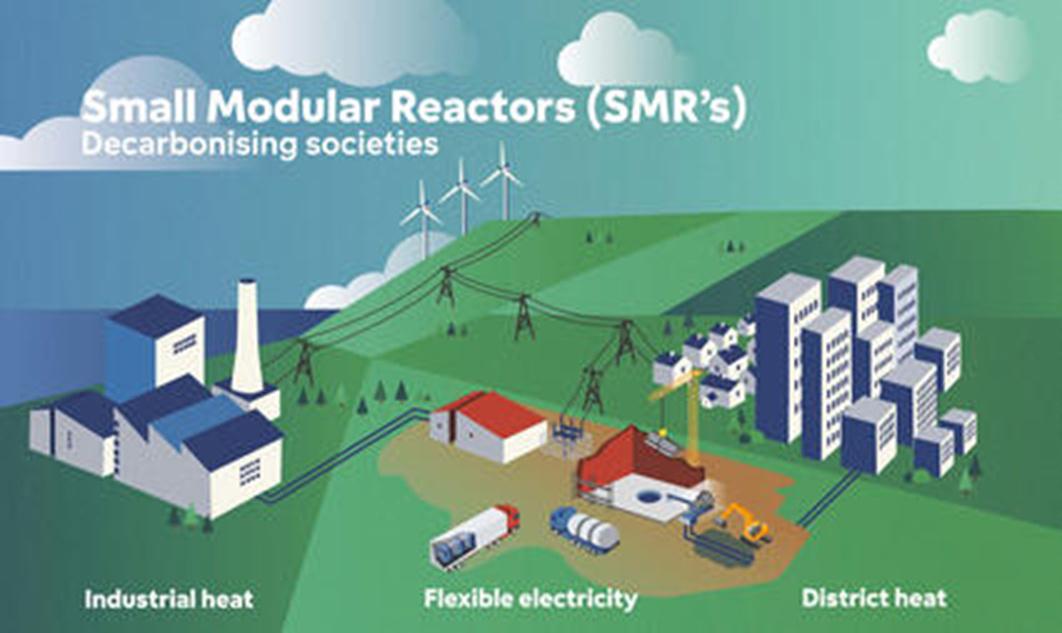
There are also some challenges associated with the relatively small amounts of nuclear waste that is generated from these facilities, as these are expensive to process and safely dispose of. The large space needed for the building of traditional large scale nuclear power plants and the related costs are also a hinderance Given the required regulatory hurdles and bespoke nature of the current designs, these projects take a relatively long time to build. Some of these concerns are addressed by the development of Small Modular Reactors or SMRs
Source: https://www fortum com/nuclear/small-modular-reactors 22
SMRs are designed with passive safety features relying on inherent safety characteristics of the reactor such as low power and operating pressure This allows SMRs to shut down automatically in the event of a malfunction or accident with no human intervention or external power or force required to shut down systems.
The passive systems in SMR designs rely on physical phenomena, such as natural circulation, convection, gravity, and self-pressurisation These safety measures significantly lower the possibility of radioactivity being released into the environment.
Page 26
SMRs are, by definition, designed to be smaller, needing smaller space to be deployed and allowing easier and more costeffective construction and maintenance. SMRs can be used in regions with limited infrastructure due to their ease of construction relative to more traditional nuclear plants They can be manufactured in a factory and transported to their site of operation
Additionally, SMRs are designed to be more fuel efficient and thus produce less waste. They can also use fuel sources other than uranium, such as thorium, which is relatively more abundant and produces less nuclear waste
Combining the benefits of SMRs with Bitcoin mining operations can further improve nuclear power economics This is because the bitcoin miner will be the buyer of first and last resort for all electricity generated by the SMR, creating a price floor that will give investors' confidence that there will be a minimum guaranteed electricity off taker while the grid transmission system is matured, or it experiences periods of offpeak demand
Since Bitcoin mining operations can be easily relocated to remote areas, and, as mentioned earlier, SMRs can be manufactured and then transported to the site of operation, these two concepts can be integrated further enhancing the economic viability of SMRs and making the model more attractive to investors and potential customers as well as allowing the production of energy from a green resource for remote areas where weather conditions might not be favourable for solar and wind energy and where geothermal and hydro power cannot be used.
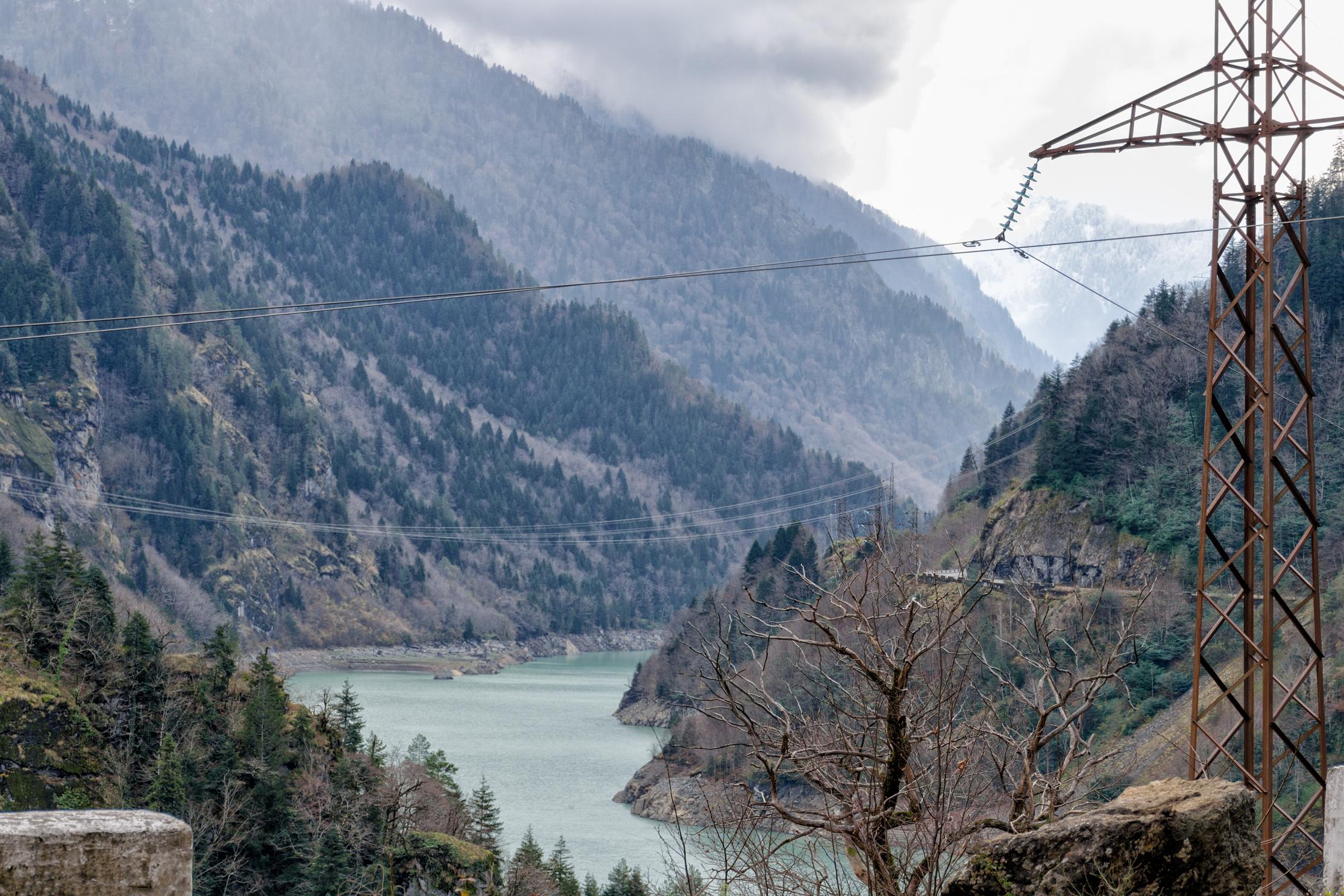
Page 27
9. Opportunity 5: Unleashing the Power of the Oceans
We have highlighted the potential uses of Bitcoin with regard to solar and wind power, however as highlighted before, there are many limitations These include the fact that the power supply is intermittent and requires batteries to fill the gaps, and that there is a high demand for raw materials such as manganese, copper, nickel, lithium, and cobalt. Not only are they limited but some are sourced in places such as the Democratic Republic of Congo, where Environmental and Social Governance (ESG) requirements are not strictly adhered to. We have also discussed Nuclear, and whilst it seems a solid solution to most applications, there may not be enough available fissile material to support it as a solution in the short term.
It is therefore prudent to look at alternatives, and one such alternative is a technology that has been around for 100 years but has always been too expensive to prove commercially. Ocean Thermal Energy Conversion or OTEC
Ocean Thermal Energy Conversion (OTEC)
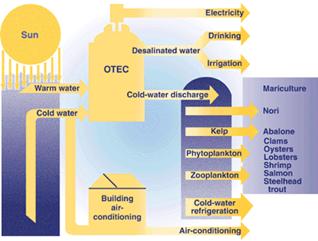
OTEC technology essentially functions using the same principles as a heat engine Not dissimilar to geothermal technology, which uses the heat generated by the earth, OTEC uses the heat of the oceans There is an estimated 8 TW of energy available in the ocean that may theoretically be harnessed before using OTEC starts cooling the surface of the ocean. This technology would be ideal for island nations and countries with long coastlines
It is not based on advanced technology nor is it rocket science, explains Nathanial Harmon, an oceanographer and the founder and CEO of Blockchain Solutions Hawaii and OceanBit Energy, who suggests it is basically plumbing.
It essentially uses oceanic differential temperatures that exists between the warm surface water and cold deep water. It is based on the Rankine cycle, also called the Rankine vapor cycle, which is a thermodynamic cycle that converts heat into mechanical energy and was invented in the 19th century
It uses a working fluid (an ammonia and water mix), to capture the energy associated with an oceanic temperature gradient
Page 28
Source: https://en wikipedia org/wiki/Ocean thermal energy conversion#cite ref-2
The ammonia in the working fluid boils when in contact with the heat exchanged with the warm surface water As it boils it is converted to pressurised gas that is directed to flow through a turbine, generating electricity The cold water then condenses the working fluid back to a liquid and the process is then repeated in a continuous closed loop.
The first OTEC plant was actually built in Cuba in the 1930s. Georges Claude , known as the “Edison of France” for his breakthroughs with neon lights and industrial gasses, built the first working model (60kW) in Matanazas bay, Cuba Whilst it allegedly did produce net power, it was short-lived, being destroyed by a hurricane after only a few days of operation.
Despite the apparent success, the 1930s turned out to be a bad time to experiment and invest in renewable energy, with the discovery of oil in the Middle East, which provided a cheap, reliable source of energy to the world for the decades to come.
If only two percent of the power available in the ocean thermal difference were utilized we would have many times as much energy as the world now needs.
–Bryn Beorse, University of California at Berkeley, 1977
Given the simplicity of the technology, it may come as a surprise that it has not become more ubiquitous as a source of energy. There are many reasons for this. One of the biggest challenges is that to date, a commercial scale plant has not been built, and so justifying the cost of building a pilot scale concept plant has been difficult.
A pilot scale plant generates very little energy relative to its building cost, but if successfully done, it will give potential investors confidence that the technology can be commercialised. Indeed, the cost of building a small scale plant compared to a larger scale plant plays a major part in the affordability of the energy. With economies of scale, commercial scale plants will be much more profitable, offering energy at affordable prices
Taking Hawaii as an example, OTEC’s capital cost associated with a pilot scale facility would end up creating energy at 50 cents per kWh Relative to the current energy prices of 43-48 cents per kWh (which is already too expensive), this is not promising as a sustainable source of energy. A commercial scale facility on the other hand will produce energy at a cost of between 4 and 20 cents per kWh. The graph overleaf shows how capital costs vs capacity scales.
Page 29
23 24
There are other challenges and risks faced by OTEC, such as storms and hurricanes in areas that are known to be prone to such weather patterns To potential developers, the lack of experience in building these plants on a large scale brings a lot of uncertainty The good news is that the oil and gas industry has accumulated decades of experience bringing offshore surface and subsea developments to fruition successfully The technology and experience from this part of the energy sector can be leveraged to overcome many of the construction challenges OTEC projects are likely to face, with just the high cost associated with proving the technology commercially to be solved
The Hawaii Opportunity and OTEC plus Bitcoin as the Solution
Hawaii offers an interesting case study as it seems an ideal place to start an OTEC revolution The island state has set a target to reach 100% renewable energy by 2045. This is a major challenge, as for example, replacing the state’s 600MW fossil fuel plant with solar energy would require a facility that is 4x the size of the international airport, would need to be supplemented by a billion USD of batteries, and would be severely challenged by the lack of available land to house the solar panels It is estimated to cost a staggering USD 6 billion
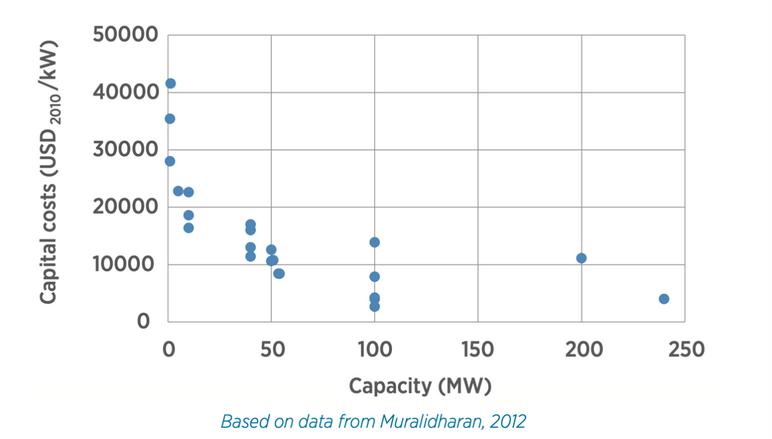
Wind would not be possible either with the land again making it difficult to build and the risk to migratory birds would be intolerable. Offshore wind farms are a possibility but would need to be the size of one of the Hawaiian islands, O’ahu, and would need to be supported by a large amount of batteries, which would likely only partially address the intermittency gap.
Nuclear is also problematic due to the risk of tsunamis, landslides, and other natural disasters, whilst hydro is a not deemed possible, as there are not enough rivers that may be dammed to serve all the islands’ needs Geothermal exists but has been the subject of controversy due to fracking techniques being used and a 2-and-a-half-year closure due to lava damage.
Page 30
Source: (Irena org – IRENA Ocean Energy Technology Brief 1)
This, therefore, opens up the possibility for OTEC to be investigated as a solution Hawaii is perfectly located to take advantage of the technology given the suitable temperature differential between the warm surface waters and cold deep water, also known as the Delta T. The higher the Delta T the more efficient the energy production (70% more power is achieved per degree of temperature difference).
So what are the options available to OTEC investors? The first is deciding whether to build offshore or onshore. Nathanial suggests that whilst onshore is an easier option, offshore would be better in order to minimise land usage on the islands and will also be able to take full advantage of the large surface area of the ocean and thus achieve a better Delta-T

This then leads to the next question: should there be a permanently moored offshore facility that is attached to a 10km cable that transports the energy to land, or should the project aim to have a freefloating platform that is used to produce hydrogen or ammonia (and which can be transported to land by ship)? A free-floating platform would have more flexibility in terms of location (equatorial waters as an example) to achieve the highest Delta-T's possible as well as being able to avoid severe weather/hurricanes These characteristics will improve energy output and thus commerciality. Considering mooring accounts for a large amount of the cost for the building of a small-scale plant, having a free-floating platform makes the most sense, according to Nathanial.
Whilst the theory may be sound, the capital cost remains a major obstacle. This is where Bitcoin comes in Looking back at Claude’s Cuban experience of high costs, he, at one point, had considered extracting microscopic grains of gold from OTEC seawater in order to increase his plant’s revenue. This would have been inefficient and difficult
Today there is Bitcoin, the internet's digital gold.
Page 31 26
source: https://www ocean-energy-systems org/publications/oes-position-papers/document/white-paper-on-otec/
In most of our renewable energy examples, Bitcoin is co-located next to the facility. With OTEC however, it is possible to integrate it into the actual process It would significantly reduce the 50 cents per kWh cost of the pilot plant, by both mining the bitcoin and using the heat generated by the mining ASICs (see next section on heat recovery) as part of the OTEC process, making it even more efficient The bitcoin generated by the process would significantly offset the capital costs making it a far more attractive option for investors and governments. Bitcoin essentially bridges the “valley of death” gap between concept phase research and full-scale commercial projects as illustrated here.
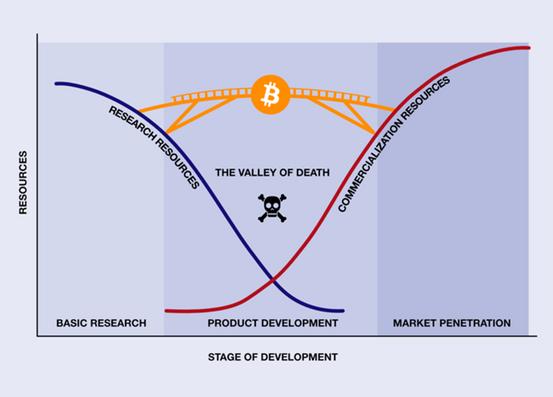
Harmon holds the belief that OTEC stands as the solitary practical solution for Hawaii to fulfil its renewable energy objectives. With the inclusion of Bitcoin mining, his firm, OceanBit, endeavours to make OTEC a viable solution to achieving this objective
We have mentioned before that the major stumbling block to renewables could be the lack of materials sourced from regions with good environmental and social governance Here, OTEC can play a major role too At the bottom of the ocean, in the same areas that OTEC would work best, lies Manganese nodules, also known as the battery rock
These are made up of nickel, copper, cobalt, lithium, and other rare earth metals. Mining these will solve much of the renewable energy raw materials problem, whilst also being more ethical and environmentally friendly than the current mines that employ questionable methods of extraction
source: https://www geomar de/en/discover/marineresources/manganese-nodules

Page 32
There are already permits for extraction being issued by the ISA – International Seabed Authority & UN, for extraction of these manganese nodules, however the amount of energy required to mine these by ship makes it very unattractive With the generation of cheap energy through the use of Bitcoin and OTEC, it makes mining in these zones not only affordable, but profitable.

To quote Nathaniel, “If you have unlimited energy, you can solve any problem OTEC is turning the surface of the ocean into a giant solar panel. There’s not enough lithium in the world to put batteries and solar panels to fuel the world’s energy resources So, instead of that, you use the ocean which is already doing that.”
 source: https://www geomar de/en/discover/marine-resources/manganese-nodules
source: https://www geomar de/en/discover/marine-resources/manganese-nodules
10. Opportunity 6: Untapped Heat Recovery

According to the International Energy Agency, heat is the world's largest energy end use, accounting for almost half of the global final energy consumption in 2021, significantly more than electricity (20%) and transport (30%). Efficient use of energy for heating is therefore a key consideration as the world continues to develop toward a sustainable future. As noted previously, bitcoin miners can operate 1000’s of individual machines known as Application Specific Integrated Circuits (ASIC’s), which require a material amount of electricity to run.
In so doing ASIC miners produce immense amounts of heat, such that they require dedicated cooling systems to dissipate it Maintaining ASICs at low temperatures ensures the machines operate at high levels of performance, avoid hardware damage, and reduce fire hazards as a result of overheating. These heat recovery systems capture a lot of heat that can be repurposed or recycled, improving the Bitcoin mining operations’ profitability and helping to drive waste minimization, energy efficiency, and environmental sustainability. Though small in scale, the following are real-world examples already being applied:
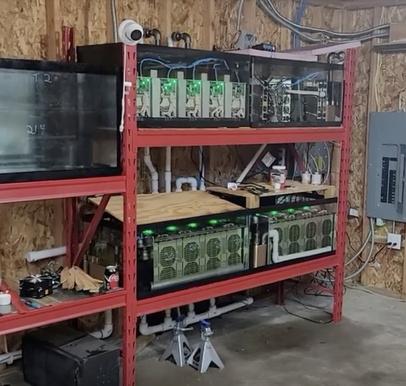
Space heating at home: Bitcoin mining has become a popular way to heat homes and small businesses during the winter months among those within the small-scale mining community Miners can save electricity costs by redirecting the heat from their ASICs to different sections of their homes or businesses through ventilation pipes This way, they can heat those spaces while earning Bitcoin.
Water heating: Another way to recycle heat from ASIC miners is water heating, which requires some heat-transferring equipment such as an intercooler or a heat exchanger Immersion cooling technology is one of the most effective ways to dissipate ASIC miners’ heat, as miners can submerge their hardware in a dielectric fluid that absorbs heat, and then pump it to a heat exchanger to transfer the heat to a water circuit Depending on the scale of the mining operation, miners can heat water for various purposes such as baths, swimming pools, or hot tubs
Page 34
Greenhouse conditioning: Greenhouses often require supplemental heat to preserve the optimal climatic and environmental conditions for growing vegetables, flowers, and fruits Miners can transfer heat from their ASICs to greenhouses through air duct systems or immersion cooling technology. This is particularly helpful in cold weather locations with less sunlight, like northern countries such as Canada, Finland, or Sweden High energy costs have driven some Dutch tulip farmers, that often rely on greenhouses, to stop growing tulips in 2022, while others have even gone bankrupt To avoid this Dutch tulip farmer, Danielle Koning, has teamed up with a Bitcoin mining firm to heat her giant greenhouse near Amsterdam with mining servers The warmth generated by the rigs is used to heat the greenhouse and cuts reliance on gas, as the servers in turn are powered by solar panels on the roof
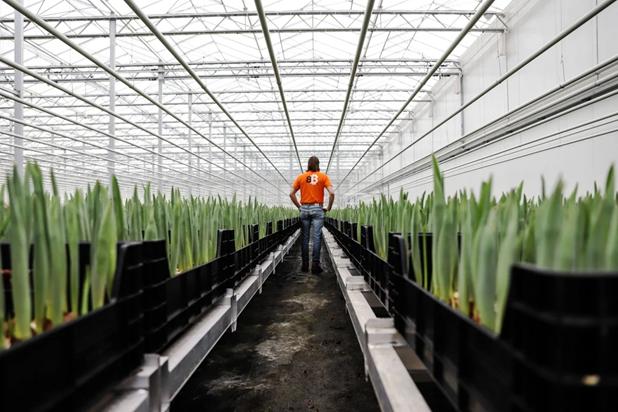
Food and drink production: Processes from the food and drink industries, such as fish and algae farming, and food preservation often require a consistent source of heat to function. Miners can provide this heat while increasing revenue from mining, enabling these processes to expand to regions with sub-optimal climatic conditions
Whisky production is one of the most creative uses of ASICs' heat, as the Canadian whisky company, Shelter Point, has demonstrated by using recycled heat from ASIC miners in its production process.
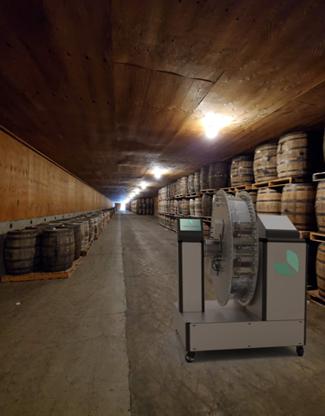
The distillery requires large amounts of thermal energy for its mash and whisky barrel aging processes
Repurposing heat from ASIC miners is one method of utilising waste from the mining process, and as the industry moves forward, solutions are expected to become more creative, efficient and widely adopted.
With Bitcoin mining becoming more institutionalised, miners are seeking maximum profitability and efficiency, making use of advanced technology and creative solutions to help them achieve this
Page 35
Bert De Groot the owner of Bitcoin Brabant walks among growing tulips in a greenhouse heated with bitcoin mining computers
Photo: AFP
Shelter Points award winning MintGreen s TUMBLER immersion Bitcoin mining vessel designed for the distillery’s barrel aging process Source: Mintgreen
11. Opportunity 7: Geothermal and Hydroelectric Energy
Having previously mentioned that geothermal and hydroelectric energy have faced some challenges in Hawaii, isn’t to say it doesn’t have a place there, and it certainly doesn’t mean that other countries can’t take advantage of the huge potential these renewable sources of energy have to offer
According to estimates by the International Renewable Energy Agency (IRENA), the global technical potential for geothermal energy is around 70,000 MW of electricity generation capacity, which is roughly equivalent to the installed capacity of the entire UK power grid. In comparison, as cited by the Global Water Forum , the annual exploitable hydroelectric energy from financially and environmentally feasible potential sites is estimated to be between 5.42 PWh/year during the dry season to 39 56 PWh/year during the rainy season Hydroelectric energy is the most widely used renewable energy source for the generation of electricity The biggest producer of hydroelectricity is China, although hydro is becoming more popular across the world with top producing countries including the United States, Brazil, Canada, India, and Russia among others More electricity is generated by hydropower than all other renewable sources.
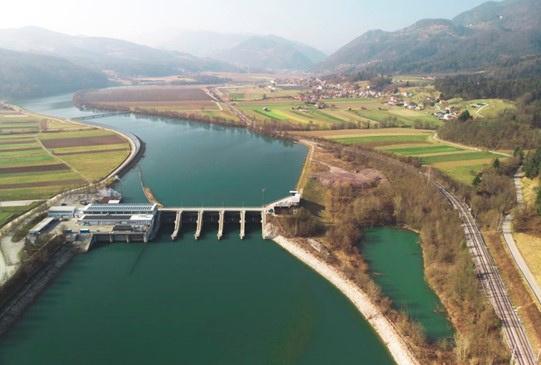
Source: https://ourworldindata org/renewable-energy
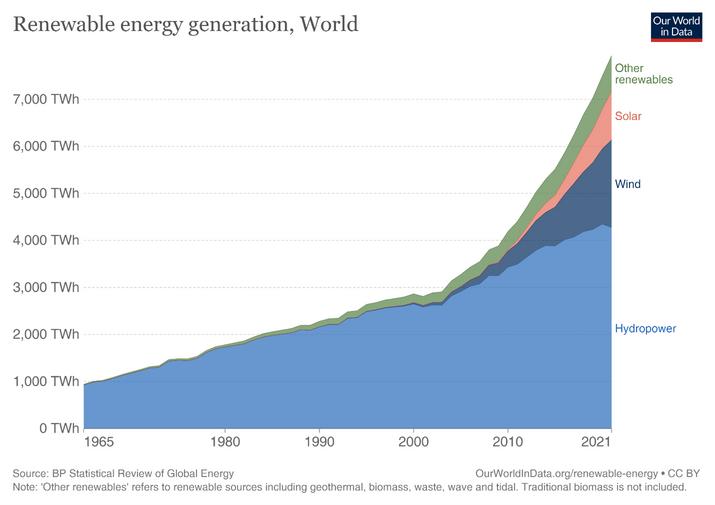
Page 36 27
Source: https://education nationalgeographic org/resource/hydroelectric-energy/
Although geothermal energy and hydro energy are not generated in exactly the same way, they do share some similarities as both are generally considered to be clean and sustainable sources of energy, they produce very little greenhouse gas emissions and have a lower environmental impact compared to traditional fossil fuel-based energy systems. Additionally, their generation involves using the Earth's natural processes to produce power that is less intermittent than wind and solar, making both types of energy sources ideal for baseload power generation.
Hydro energy is generated by using the kinetic energy of flowing water, most commonly through the use of hydroelectric dams. The energy from the falling water is converted into mechanical energy, which is then used to generate electricity through a turbine and generator system There are three main types of hydroelectric energy plants . The most used is the impoundment facility, which uses a dam In this type of plant, water is stored in a reservoir behind the dam and then released to flow downward via a turbine.
The second type is a diversion facility that channels flowing river water to the turbines using a series of canals instead of a dam. Finally, a pumped-storage facility collects energy from other sources and stores it by pumping water uphill from a lower pool to a higher reservoir, releasing it during periods of high electricity demand to turn the turbine thus generating electricity.
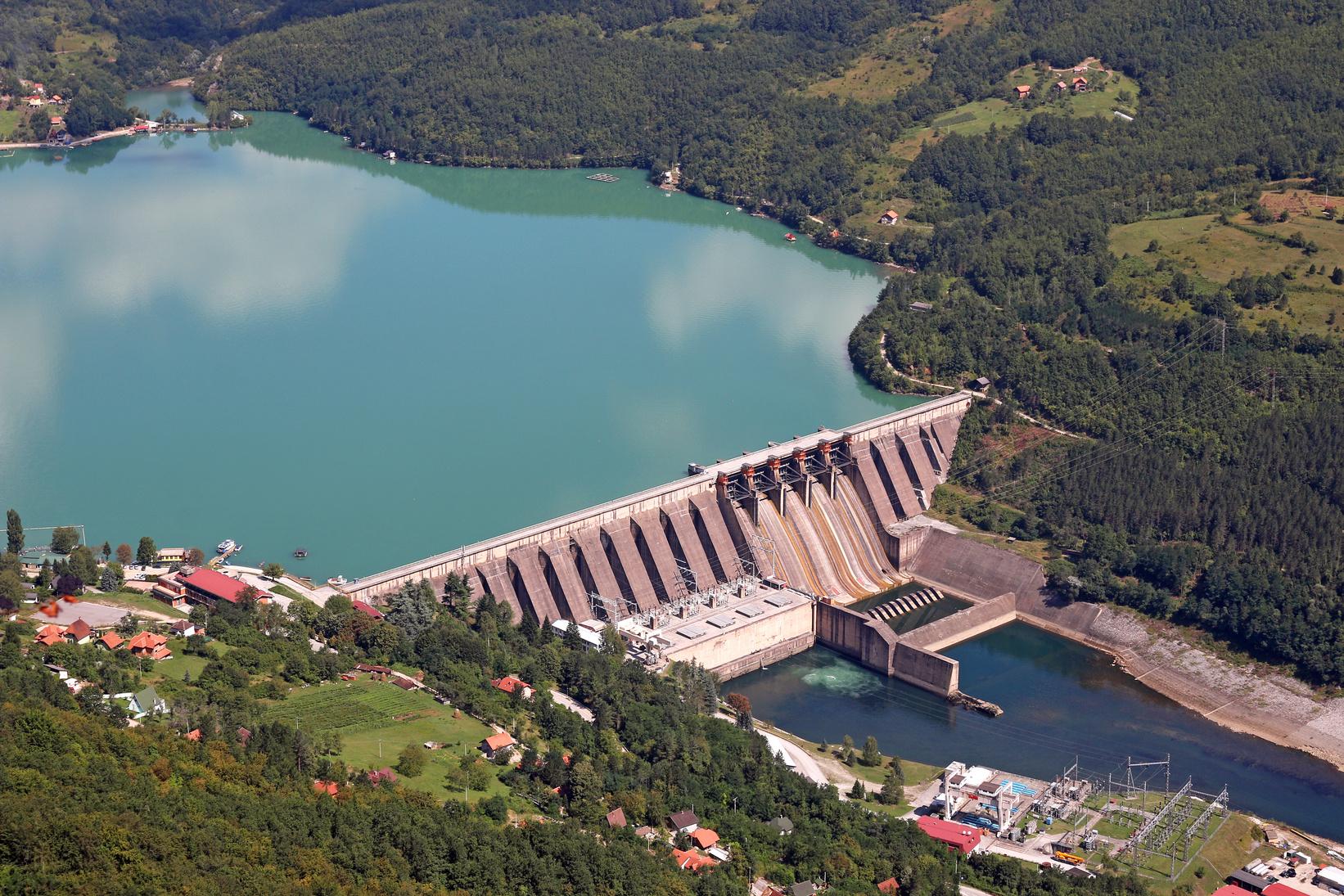
Geothermal energy is generated by harnessing the heat energy that is stored beneath the earth's surface The heat originates from the decay of radioactive materials in the earth's core and is transported to the surface through conduction and convection processes Direct-use systems involve using geothermal heat directly for heating buildings, greenhouses, swimming pools, and other purposes
In these systems, a geothermal heat pump is used to transfer the heat from the earth to the building, where it can be used for space heating or hot water. Power generation systems involve using geothermal heat to generate electricity These systems typically require a geothermal reservoir, which is an underground reservoir of hot water and steam Wells are drilled into the reservoir, and the hot water and steam are brought to the surface using pumps. The steam is then used to drive a turbine, which generates electricity
Page 37 27
Significant potential globally for geothermal power
The countries with the largest installed capacity of geothermal power are the United States, Indonesia, and the Philippines, however, several regions around the world are believed to have significant untapped potential for geothermal energy development. Some of these include:
East Africa: The East African Rift System is a region of active volcanic and tectonic activity, with the potential for large geothermal resources Kenya has already developed significant geothermal capacity, but other countries in the region, such as Ethiopia, Tanzania, and Rwanda, are also believed to have significant untapped potential
Southeast Asia: The Philippines and Indonesia are already major producers of geothermal energy, but other countries in the region, such as Vietnam, Thailand, and Malaysia, also have significant untapped potential.
South America: Several countries in South America, including Chile, Peru, and Argentina, have geothermal resources that are largely undeveloped
Central Europe: Countries such as Germany, France, and Switzerland have limited geothermal capacity, but there is believed to be significant untapped potential in the region
Australia and New Zealand: While these countries already have some geothermal capacity, there is believed to be significant untapped potential in areas such as the Taupo Volcanic Zone in New Zealand and the Great Artesian Basin in Australia
Challenges facing Geothermal and Hydroelectric Energy
Geothermal
Despite the potential, it is worth noting that the development of geothermal resources requires significant investment in drilling and infrastructure, which can be prohibitively expensive for some countries or private investors In addition to this, it can be difficult to accurately assess the size and productivity of geothermal resources before drilling and development, which can make it challenging for investors to justify the upfront costs
Hydroelectric
Although hydropower is the largest renewable power generation resource today, the current capacity growth trends are not enough to meet the goals set for the Net Zero Scenario of reaching 5,700 TWh of annual electricity generation by 2030 For this to happen, an annual growth of approximately 3% on average is needed till 2030 . Achieving such a growth rate for hydro power is increasingly challenging considering recent droughts, effects of climate change on water availability, maintenance of the ageing of hydropower plants (with more than 40% of the global fleet being at least 40 years old), and high initial expenditure requirements associated with new hydro plants
Page 38 29
Bitcoin mining as the solution
It’s important to understand why Bitcoin might be a good fit for geothermal and hydro energy As highlighted throughout this publication, Bitcoin miners rely on finding the cheapest energy possible in order to make a profit. Geothermal and Hydro energy are particularly attractive options for Bitcoin mining because they provide a steady, reliable source of electricity that is available 24/7, regardless of weather conditions.
As mentioned earlier, with hydroelectric power plants being an aging infrastructure, requirements for modernisation and refurbishment are needed. However, such modernisation efforts come at a cost Integrating Bitcoin mining operations with hydro plants is one solution to offset these expenses. By utilizing revenue streams generated from bitcoin mining, hydro plants can be updated and become more cost-effective A recent example of this was with one of the world's oldest operating hydroelectric power plants located in Mechanicville, Saratoga County, New York in the USA, that was nearly dismantled due to high maintenance cost and the loss of a key off taker Signing an agreement with a bitcoin miner saved the plant from closure
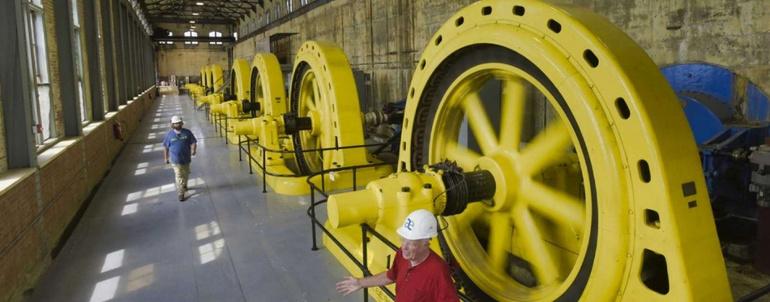
This concept applies not only to existing hydro plants but also for the development of new ones and the same is true for geothermal plants By integrating bitcoin mining with geothermal and hydroelectric power, we can create a sustainable and profitable model that benefits both the energy sector and the Bitcoin mining industry.
Several geothermal energy companies, such as Ormat Technologies and Enel Green Power, have partnered with bitcoin mining companies to provide them with renewable energy ensuring a guaranteed income stream for the energy companies Additionally, Iceland’s geothermal generation gives reliably cheap power for miners to build mining farms within this cold climate region, providing the additional benefit of keeping the mining units cool, thus reducing costs further. It is not just large geothermal plants benefiting from this either.
Local farmers in Iceland have made deals with Bitcoin miners to use the excess energy from private geothermal boreholes on their land
Page 39
Mechanicville Hydroelectric Plant is the longest-running hydro plant in the U S and one of the oldest in the world Source: Paul Buckowski/Albany Times Union
Another integration with bitcoin mining was undertaken by a hydro plant owned by Costa Rican energy entrepreneur, Eduardo Kopper Kopper turned to Bitcoin mining after his hydro plant was forced to close due to the country's surplus of renewable energy He converted his shuttered hydroelectric plant into a Bitcoin-mining center, the first of its kind in Costa Rica which enabled him to revive two of his 1 MW hydropower plants The project has allowed him to avoid laying off his staff of 25 employees and he is planning to reactivate a third plant in the coming months.

Knowing this, Bitcoin mining could potentially form a key part of a country's future energy strategy. As an example, the Central American nation of El Salvador plans to create a brand-new city, powered and funded by geothermal volcano power which mines bitcoin As with nuclear, bitcoin can potentially help geothermal plants get off the ground by being a buyer of first and last resort, creating a price floor, and providing steady demand for electricity
This can help offset the uncertainty and high upfront costs of developing geothermal resources and reduce the ongoing cost of energy generation Bitcoin can also help in the modernization of aging hydroelectric plants as well as the development of new hydro plants. Agreements could even be made by governments and private investors for profit sharing with bitcoin mining companies, with some profits being channelled back to supporting the development of local communities.
30
12 .The future may appear to be bright, but it is not guaranteed
As we demonstrated in this publication, the integration of the energy sector and Bitcoin mining offers promising benefits for sustainable energy practices However, it is critical to recognise the dependency of the Bitcoin market on investor sentiment and market conditions. The price of bitcoin is highly volatile and therefore, we would like to note that as the value of bitcoin can experience significant fluctuations, the information presented in this publication is subject to change based on such market conditions. While promising, given its 14-year track record without a material failure, bitcoin’s future is not guaranteed In the event of its failure as an asset, the opportunities presented in this publication may become irrelevant.
Ultimately, the future of Bitcoins integration with energy markets will depend on the performance of Bitcoin the asset. While we are optimistic about this outcome, given its clear use case as a decentralized digital money, it is not guaranteed and we would advocate that those seeking to establish themselves in this industry, do so with vigilance and a solid understanding of the risks, as outlined in our previous publication ‘Money Revolutions’
13. Conclusion
4
It is no revelation that we live in an incredibly complex world that has many challenges. There is no silver bullet or perfect solution to solving these challenges, and with each strategy that we implement, it must be acknowledged that these are done with trade-offs. What is key is that when making these trade-off decisions, we do so with a deep understanding of the risks, costs and benefits associated with the different options that we may select With respect to energy infrastructure development, the best option will be region specific and could vary substantially from place to place As an example, developed economies may invoke policies that prioritize an energy transition to renewable sources given an already mature and established energy grid, while developed economies may take a longer-term view, prioritising building out of the grid using the most affordable sources of energy first with the ultimate goal of having a more diversified energy mix later on, as poverty is alleviated.
At its heart, we believe the aim should always be to maximize human flourishing while minimizing negative side effects We should aim to build energy affordability, resilience, and reliability while aiming to achieve the goals of sustainable development. To achieve this, we will need a mixture of energy sources As demonstrated in this publication, we believe Bitcoin provides energy policymakers and energy project developers with more optionality that maximizes the strengths or mitigates the side effects of various energy development options.
We have shown that while bitcoin is a consumer of electricity, this does not translate to it being a high emitter of carbon dioxide and other atmospheric pollutants Bitcoin can be the catalyst to a cleaner, more energy abundant future for all.
Page 41
It will do this by:
Being a flexible load resource for grid demand response service provision and a facilitator of smart grids;
Being a consumer of methane that would otherwise be vented to the atmosphere, supporting UNEP's mission of “reducing methane emissions by 40-45% by 2030”;
Being a catalyst to reducing the waste associated with curtailment of wind and solar energy projects, leading to faster growth of these types of developments;
Being an economic enabler to marginal hydroelectric, geothermal, and nuclear energy projects, acting as a buyer of first or last resort;
Being the bridge to upscaling the world's first commercial Ocean Thermal Energy Conversion project, leading to the growth of this technology; and
Being a tool for heat recovery systems for domestic and small and medium enterprise heat energy consumers
On December 4, 1921, the New York Tribune published an article that reported on the intention of Henry Ford, the founder of Ford Motor Company, to replace gold with an energy currency that he believed “could break the banking elites’ grip on global wealth and put an end to wars ” . He intended to do this by building “the world’s greatest power plant” and creating a new currency system based on “units of power. ”
While he never managed to bring this vision to reality, some 100 years later, Bitcoin, in its mission to be a global decentralised open source natively digital currency for the world, appears to inadvertently become the first real-world attempt at realizing Ford’s vision Based on the numerous areas we discussed in this publication, it is clear that the energy sector and the Bitcoin network will increasingly become intertwined
Counterintuitively, it is Bitcoin’s need for energy that makes it such a good partner to the energy industry As we have shown in this paper, Bitcoin is the buyer of last resort for all electricity, creating a price floor that incentivizes the building of new power plants around different types of energy sources Were it not for Bitcoin, these would have otherwise been left untapped or stranded.
For mining to be economically attractive, the price of energy needs to be low. Bitcoin miners therefore actively seek out stranded or untapped forms of energy when setting up shop As noted before, being location agnostic is an important feature of Bitcoin mining that allows for this As energy markets initially bootstrapped by bitcoin miners become more mature, with other consumers competing for supply, the price invariably becomes unattractive relative to other potential stranded or untapped sources, so the miners are incentivized to move on.
It is not hard to see that this practice, when repeated over time, could lead to an energy growth boom across the world, acting as a catalyst for human flourishing
Page 42
As Bitcoin and energy markets continue to converge it is likely that the energy infrastructure owners and miners will vertically integrate The emerging synergy between bitcoin mining and energy production continues to gain traction and instead of being seen as a villain by those who advocate for a sustainable green future, it will instead come to be seen as an enabler of that future What is undisputed is that as the world continues to develop, more energy will be required to lift people out of poverty.

Innovative solutions will be required if we are to optimize the required growth in energy supply Bitcoin's energy consumption continues to receive criticism, often by those with a limited understanding of Bitcoin and often an equally limited understanding of the energy sector We hope that by exploring the subject more deeply, we have contributed to a new narrative that is based on fact and is illustrated through real-world examples
We hope that by sharing some of the available research and case studies, our readers are better informed about bitcoin's contribution to the energy transition, moving the discussion from one about risks to that of one about opportunity, and perhaps, with time, be the reason our civilisation achieves a Kardashev type 1 classification
References
1 Cambridge Centre for Alternative Finance (CCAF), Cambridge Judge Business School, University of Cambridgehttps://ccaf io/cbeci/index
2 Pisani-Ferry, Jean 2021 “Climate Policy Is Macroeconomic Policy, and the Implications Will Be Significant ” Peterson Institute for International Economics Policy Brief 21-20, Washington, DC
3 https://blog wallbox com/how-norway-became-a-global-ev-leader/
4 Yergin, Daniel 2021 The New Map: Energy, Climate, and the Clash of Nations New York: Penguin
5 “Money Revolutions” Enterprise Risk Magazine, Winter 2022
6 https://www coingecko com/en/coins/bitcoin/
7 Bitcoin is Protecting Human Rights Around the World: https://www youtube com/watch?v=xLYYh4aPXAM
8 UK National Grid ESO, Operability Strategy Report 2022
9. How Bitcoin Mining Can Transform the Energy Industry, September 2022, Arcane Research
10. Ali Menati, Kiyeob Lee, and Le Xie, Modeling and Analysis of Utilizing Cryptocurrency Mining for Demand Flexibility in Electric Energy Systems: A Synthetic Texas Grid Case Study, Department of Electrical and Computer Engineering Texas A&M University
11. https://deltaliquidenergy.com/what-goes-into-making-a-solar-back-upbattery/#:~:text=Though%20lithium%20is%20the%20major,graphite%2C%20cobalt%2C%20and%20nickel
12. https://www.linkedin.com/in/danielsbatten/
13 https://www unep org/explore-topics/energy/what-we-do/methane/methane-everything-you-need-know
14 https://batcoinz com/how-carbon-negative-are-different-ways-of-combusting-atmosphere-bound-methane/
14 https://www weforum org/videos/this-start-up-catches-waste-methane-to-power-data-centres
15 https://www investopedia com/bitcoin-halving-4843769
16 Q3 Bitcoin mining council survey confirms year on year improvements in sustainable power mix and technological efficiency
https://bitcoinminingcouncil com/bitcoin-mining-council-survey-confirms-year-on-year-improvements-in-sustainablepower-mix-and-technological-efficiency-in-q3-2022/
17 Cambridge Centre for Alternative Finance (CCAF), Cambridge Judge Business School, University of Cambridgehttps://ccaf io/cbeci/ghg/index
18 Bitcoin is Key to an Abundant, Clean Energy Future - Bitcoin Clean Energy Initiative, White Paper https://assets ctfassets net/2d5q1td6cyxq/5mRjc9X5LTXFFihIlTt7QK/e7bcba47217b60423a01a357e036105e/BCEI White Paper pdf
19 https://www pv-magazine com/2022/10/06/australias-first-solar-powered-cryptocurrency-mining-center-tocombat-curtailment/
Page 44
20 L Öysti, Bitcoin and Energy Consumption, Alto University, 2021
https://aaltodoc aalto fi/handle/123456789/111699
21 https://blockworks co/news/bitcoin-mining-nuclear-energy
22 https://www iaea org/newscenter/news/what-are-small-modular-reactors-smrs
23 https://argonautes club/george-claude-s-cuban-otec-experiment html
24 https://www hawaiianelectric com/billing-and-payment/rates-and-regulations/average-price-of-electricity
25 https://climate-xchange org/2020/10/29/what-the-reopening-of-the-puna-geothermal-plant-means-for-hawaii/

26 https://bitcoinmagazine com/business/bitcoin-unlocks-ocean-energy
27 https://globalwaterforum org/2022/04/07/assessing-global-hydropower-theoretical-technical-and-feasibilityperspectives/
28 https://education nationalgeographic org/resource/hydroelectric-energy/
29. https://www.iea.org/reports/hydroelectricity
30. https://www.dw.com/en/bitcoin-can-cryptocurrency-mining-ever-be-environmentally-friendly/a-60818440


 By Dylan Campbell SIRM and Alexander Larsen CFIRM
By Dylan Campbell SIRM and Alexander Larsen CFIRM


























 source: https://www geomar de/en/discover/marine-resources/manganese-nodules
source: https://www geomar de/en/discover/marine-resources/manganese-nodules










